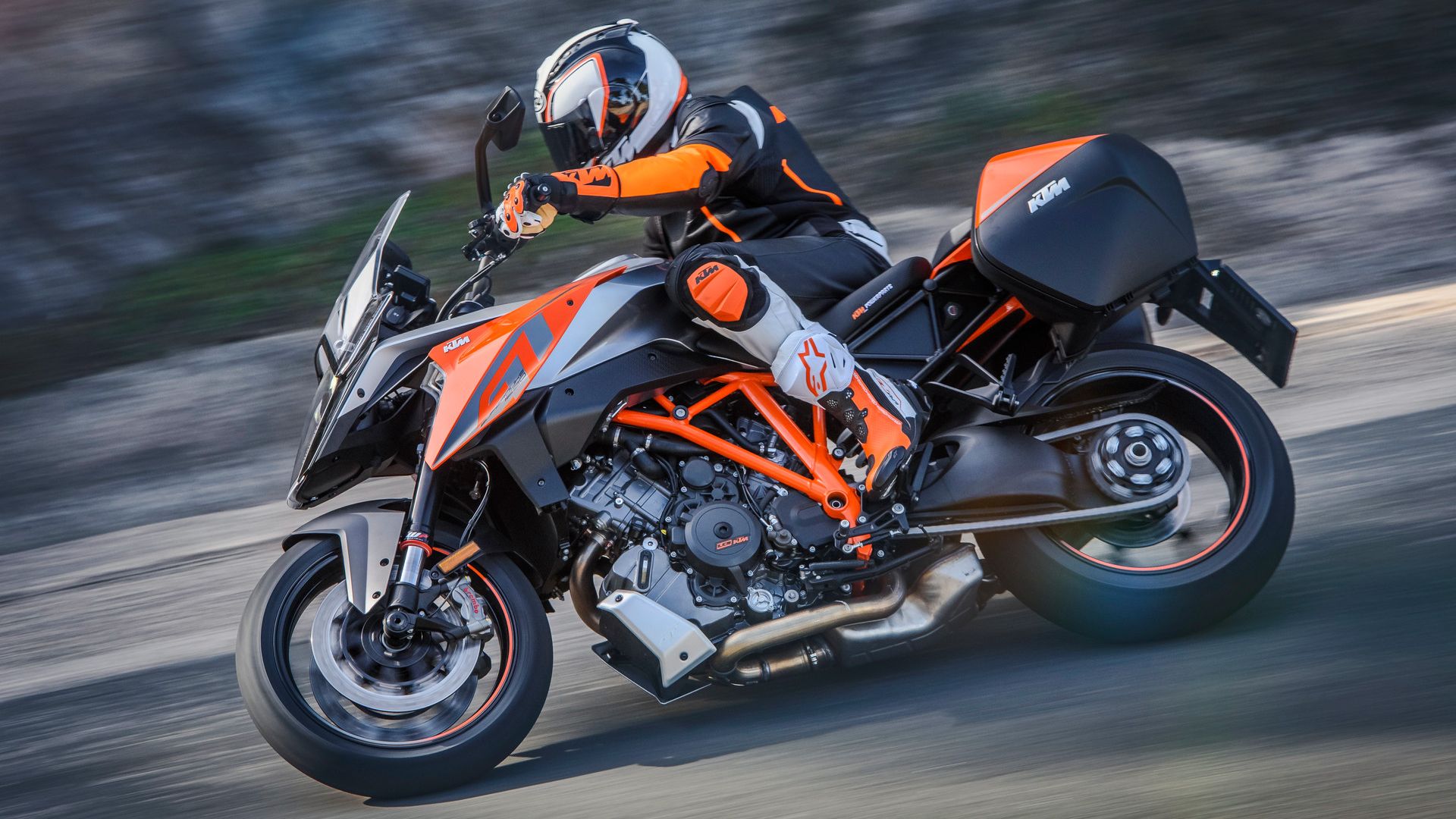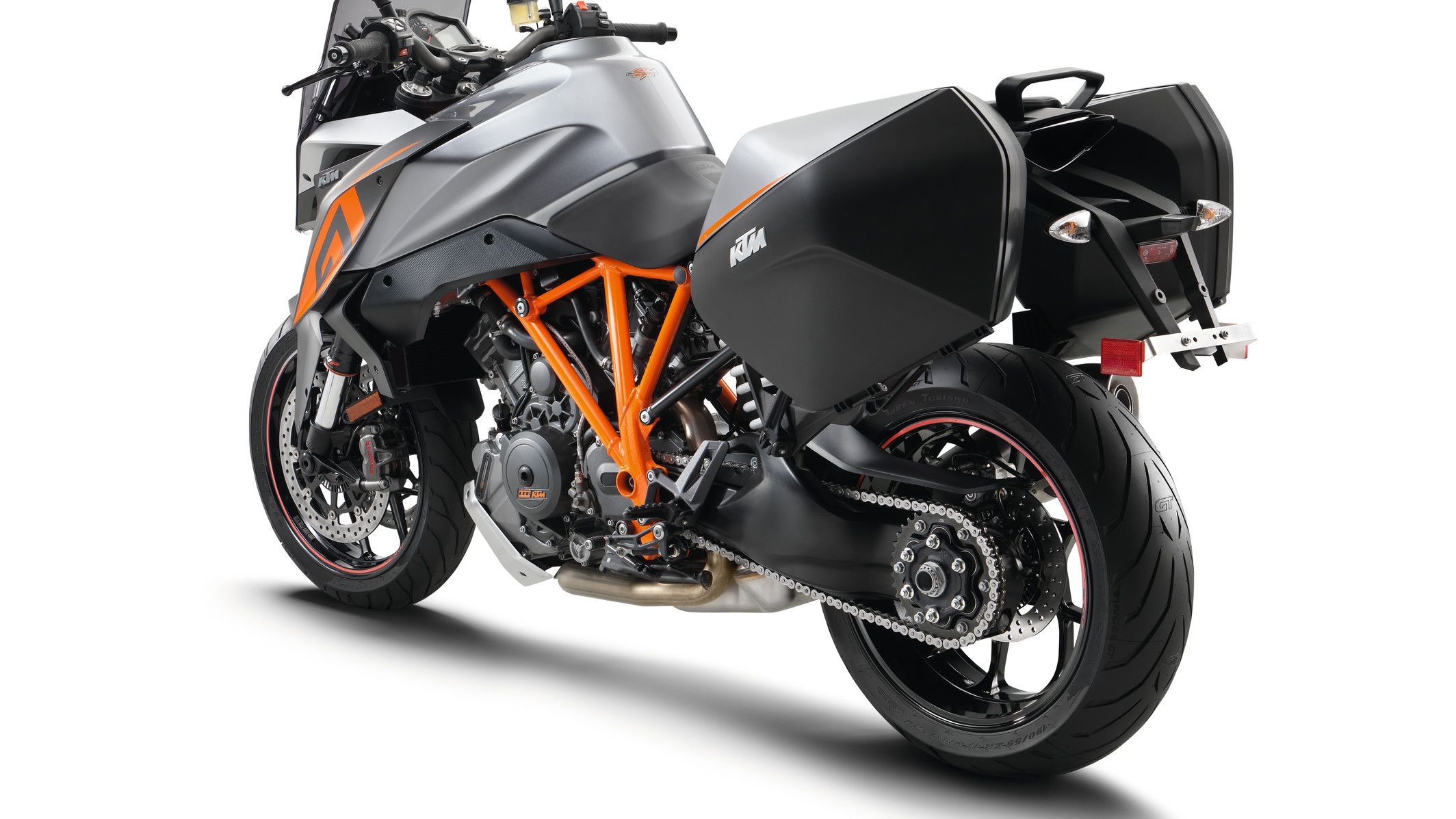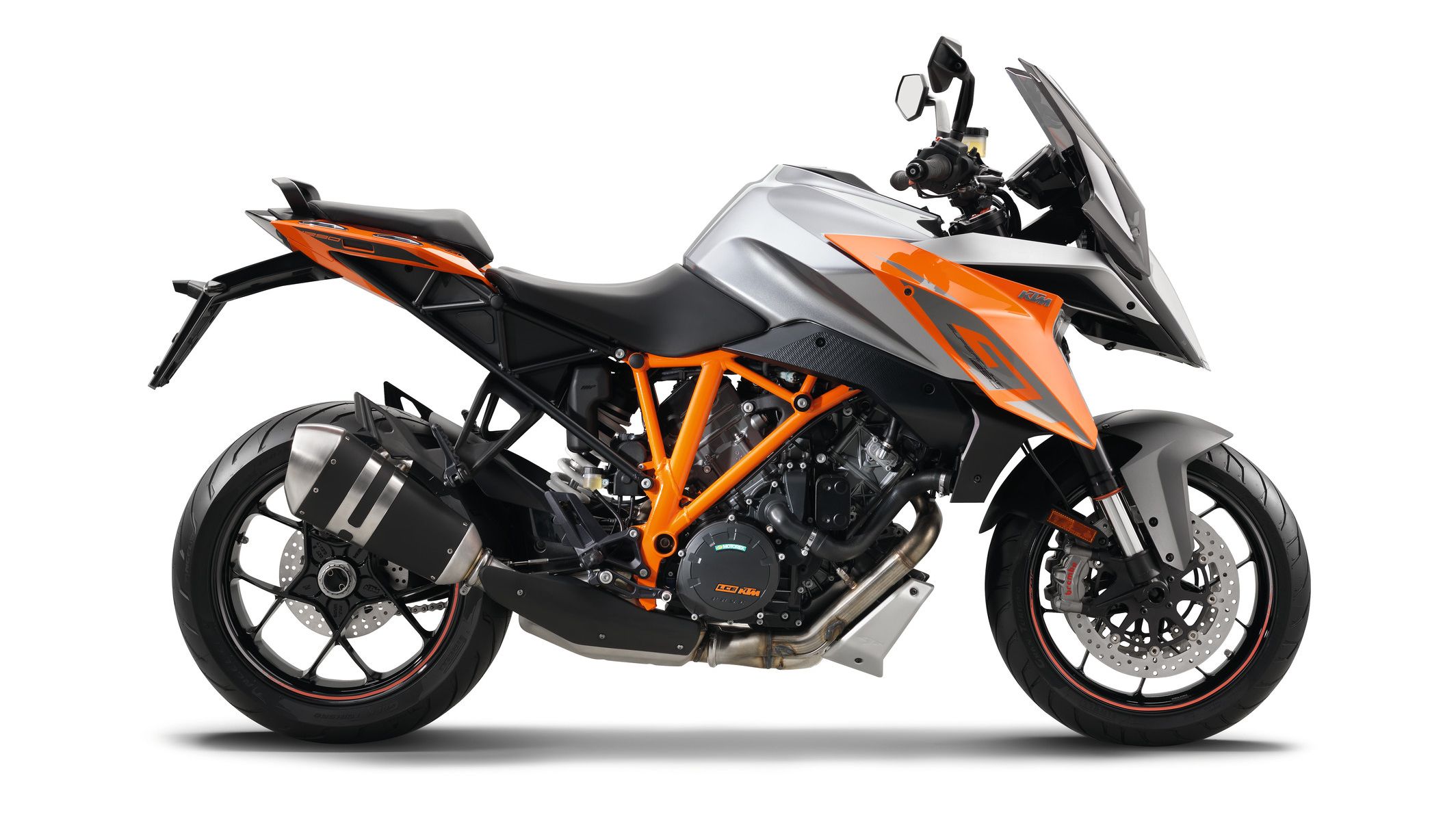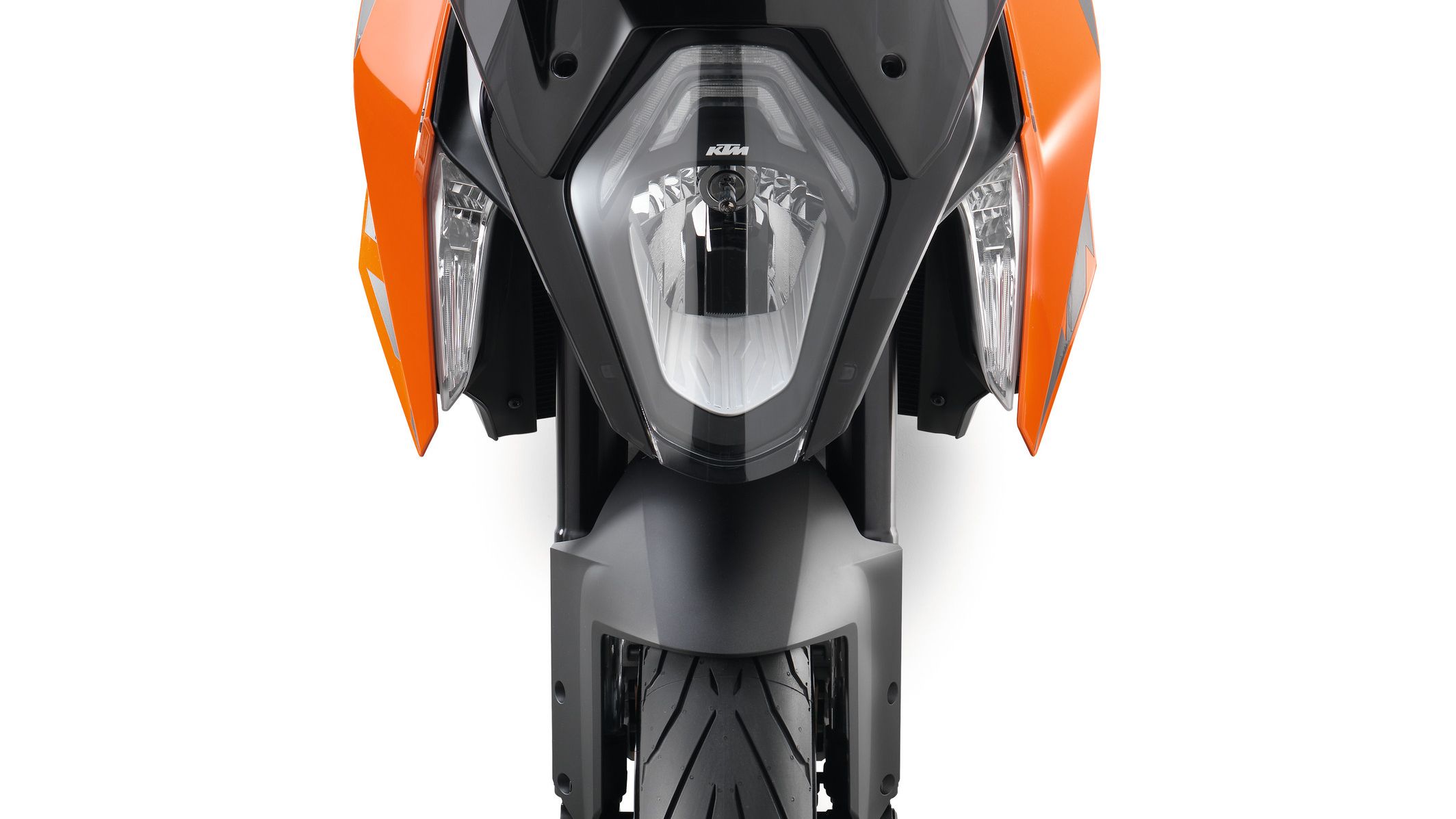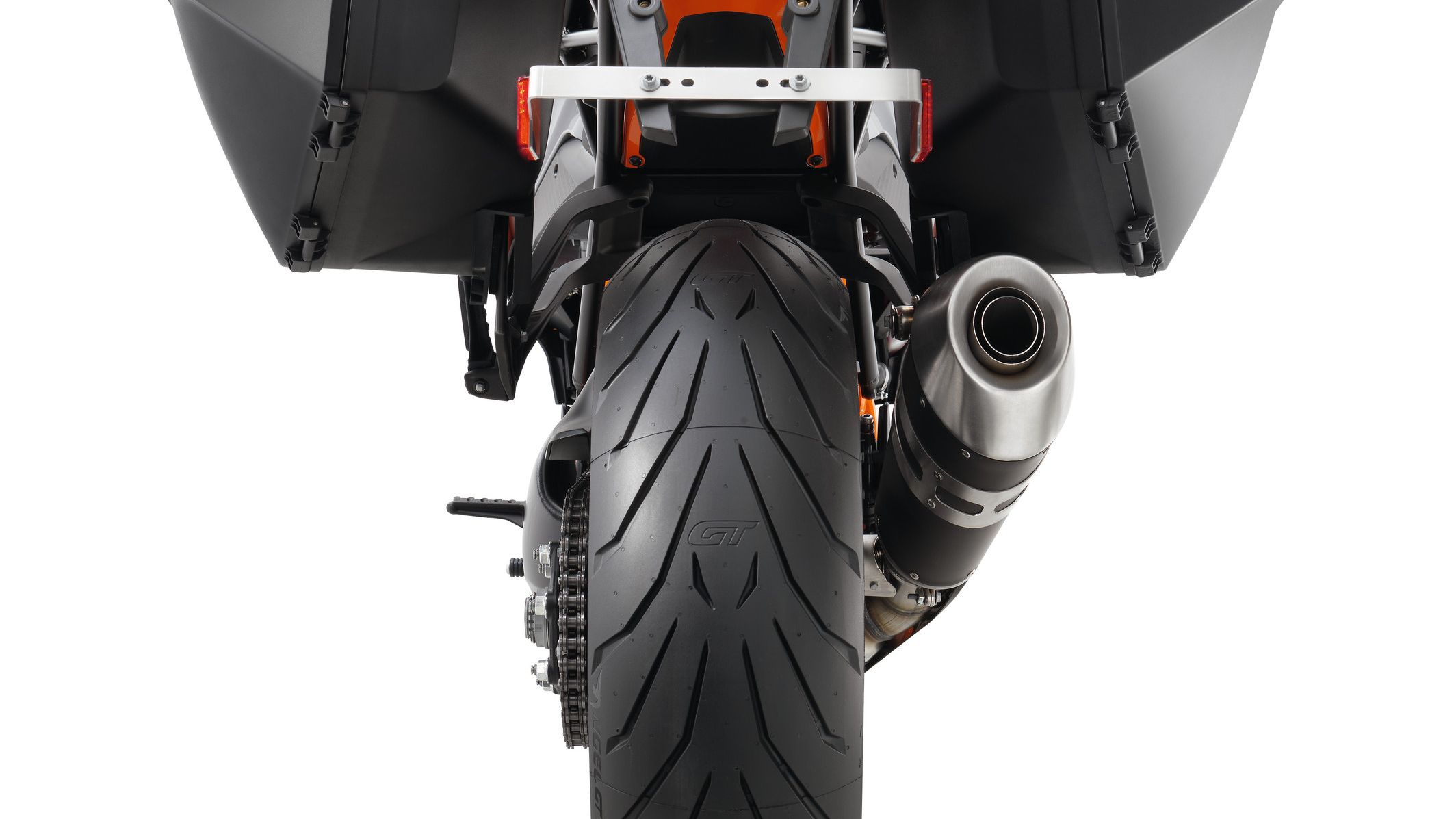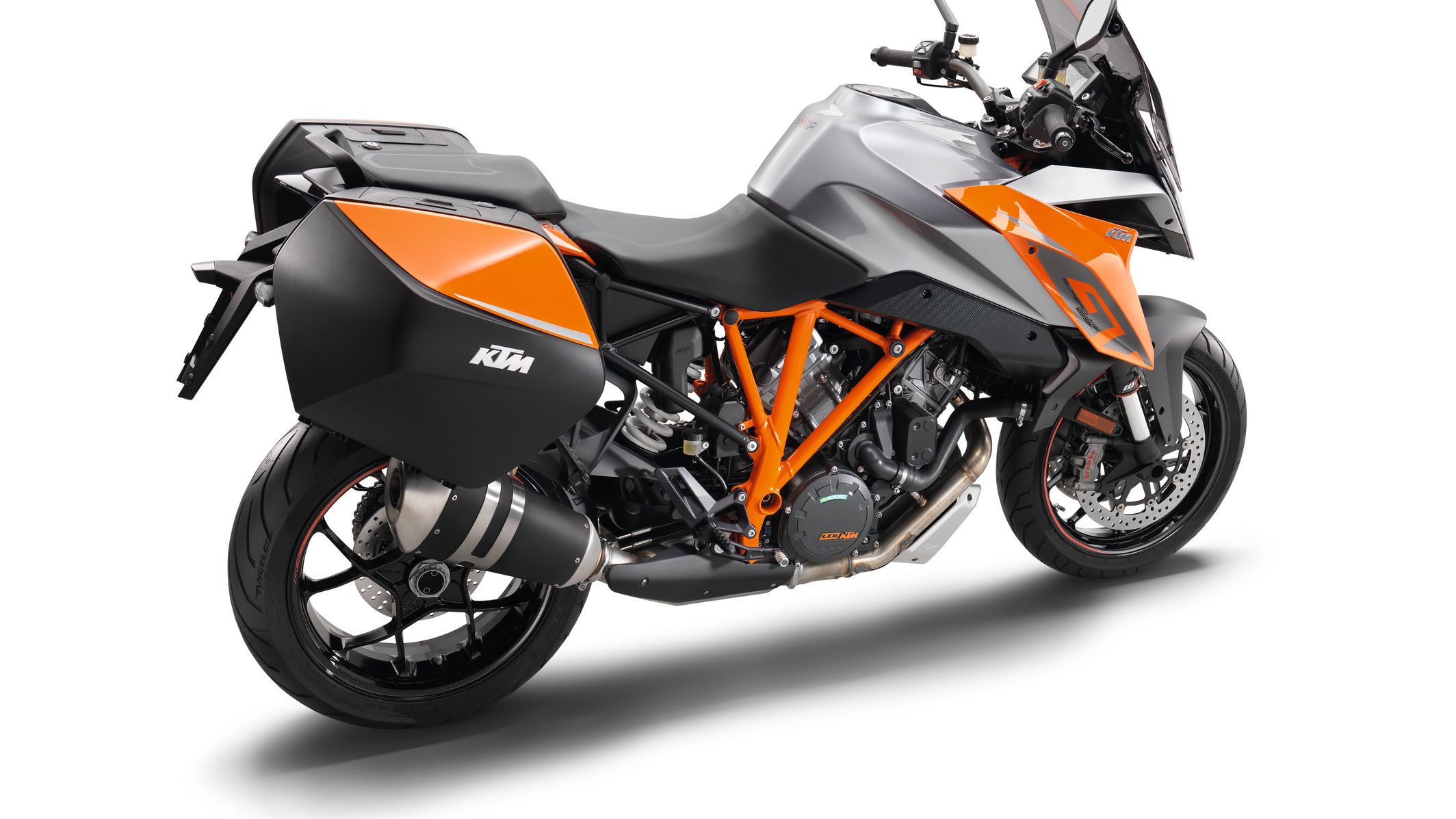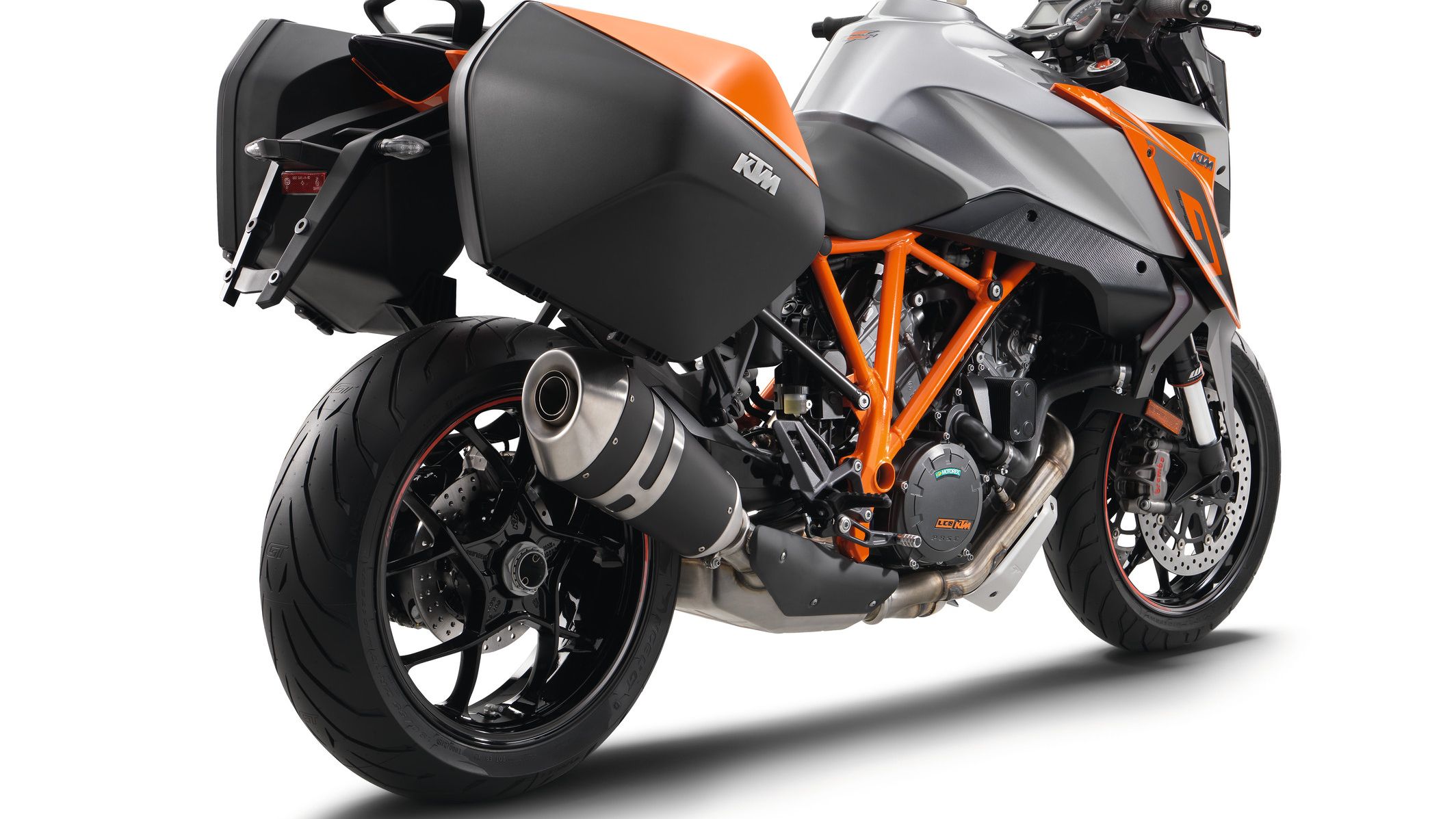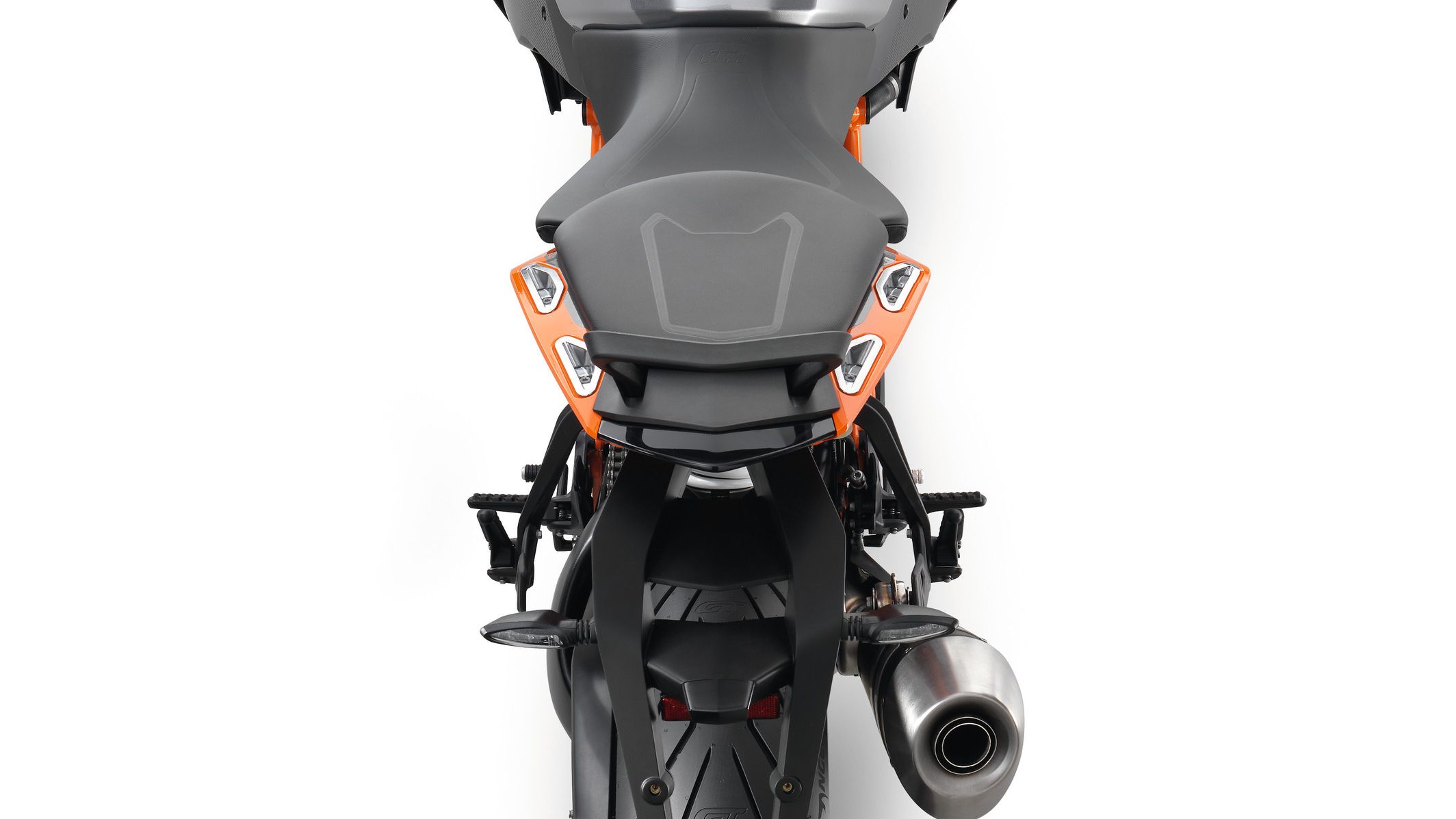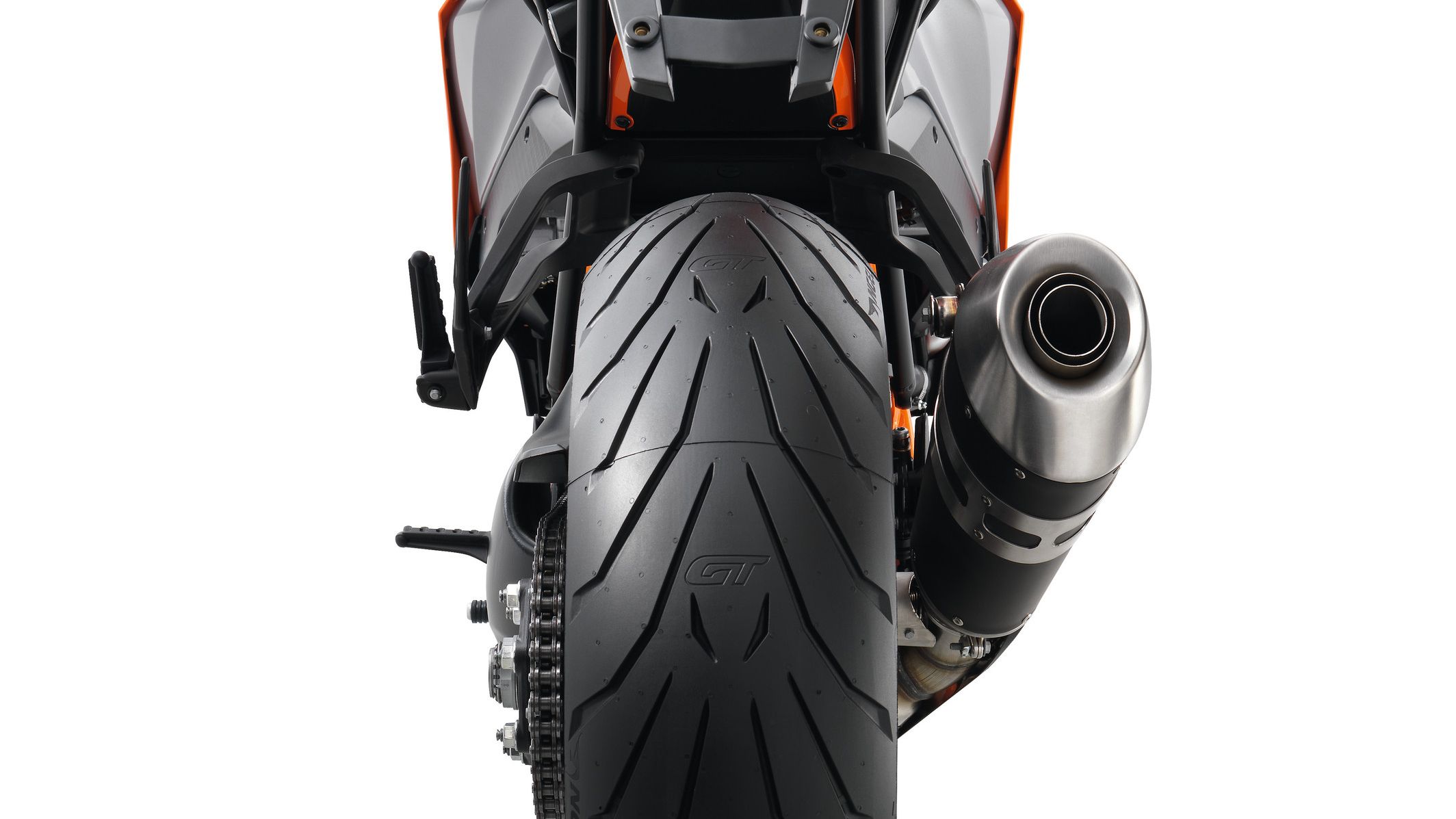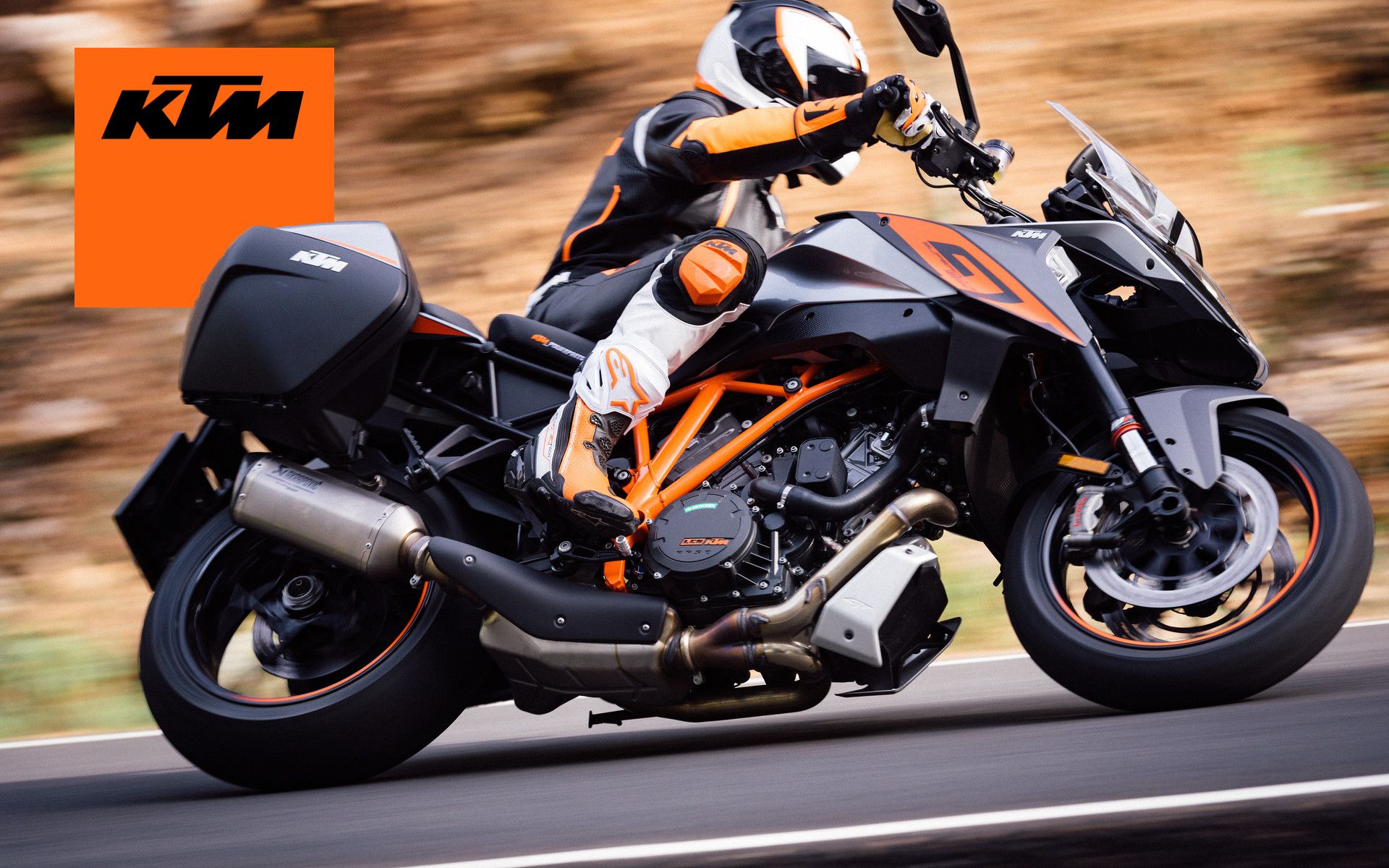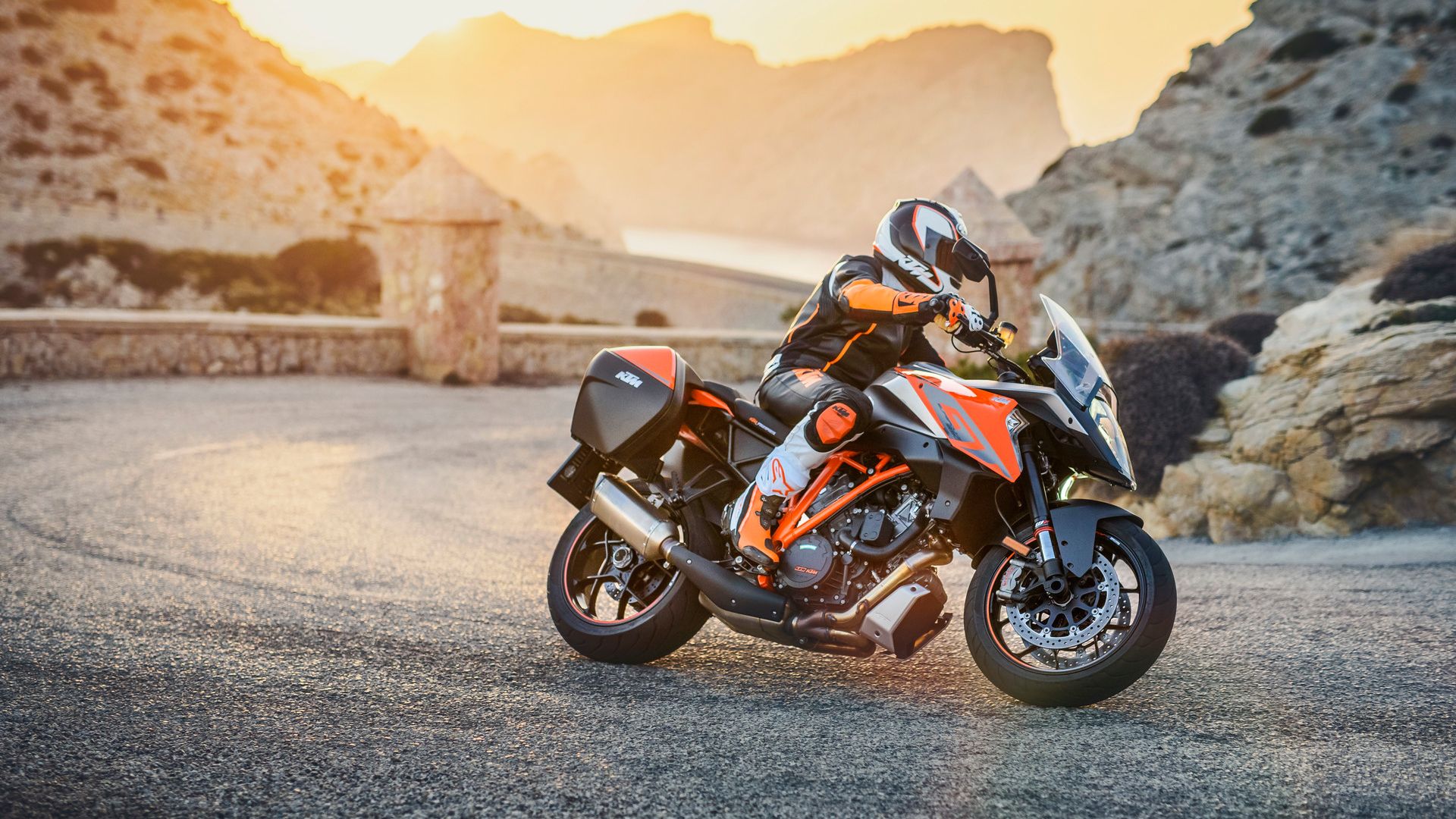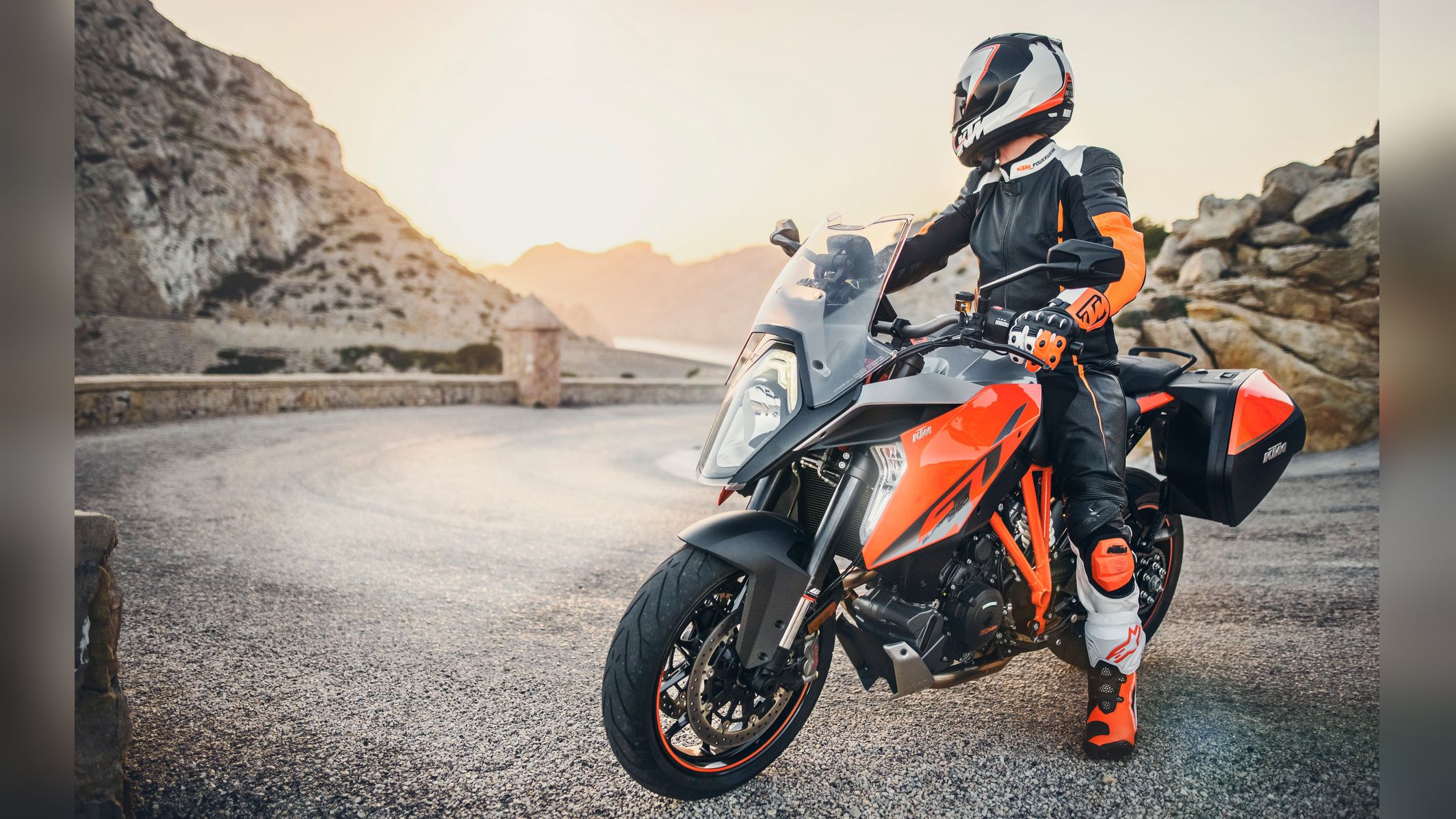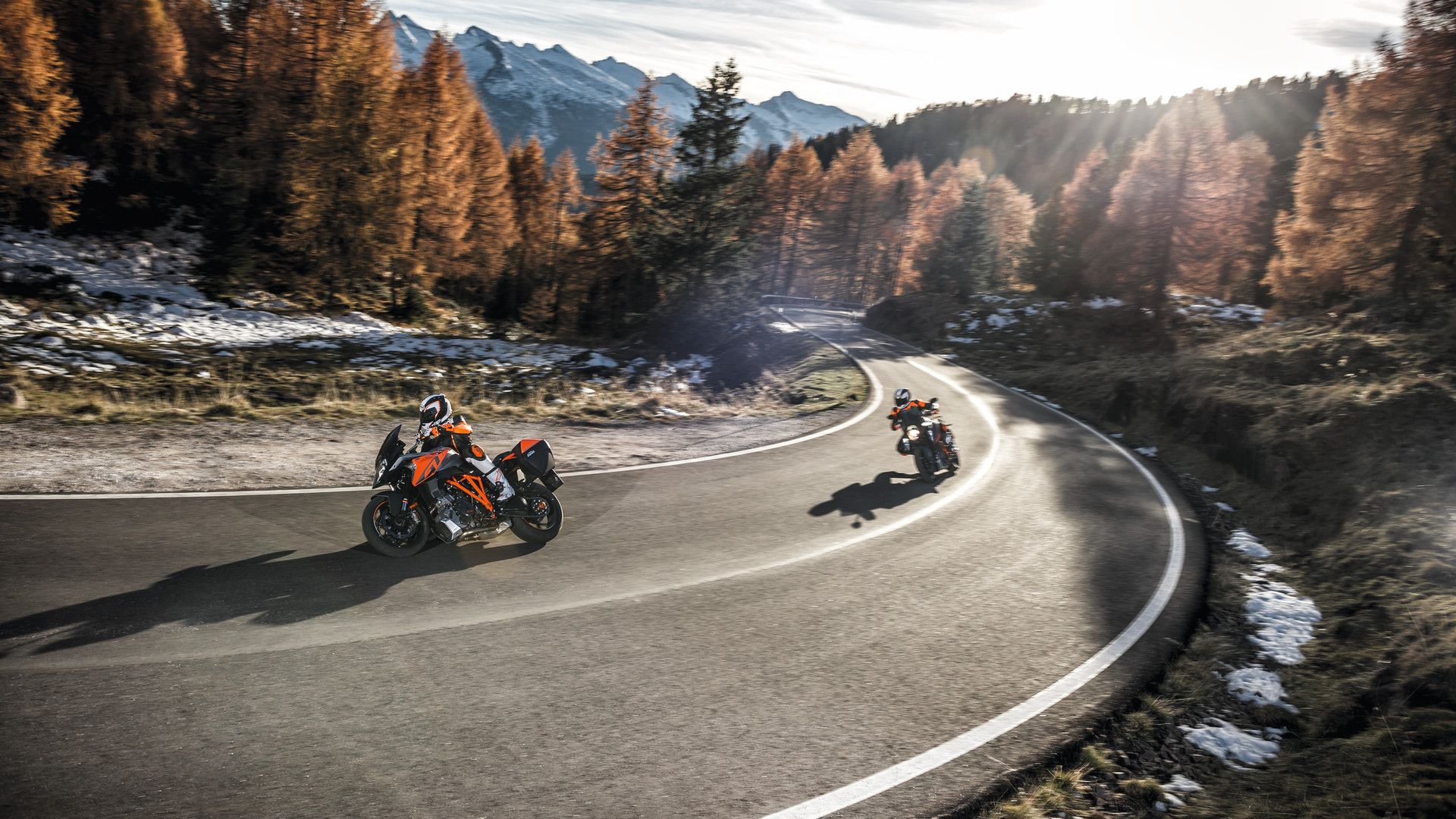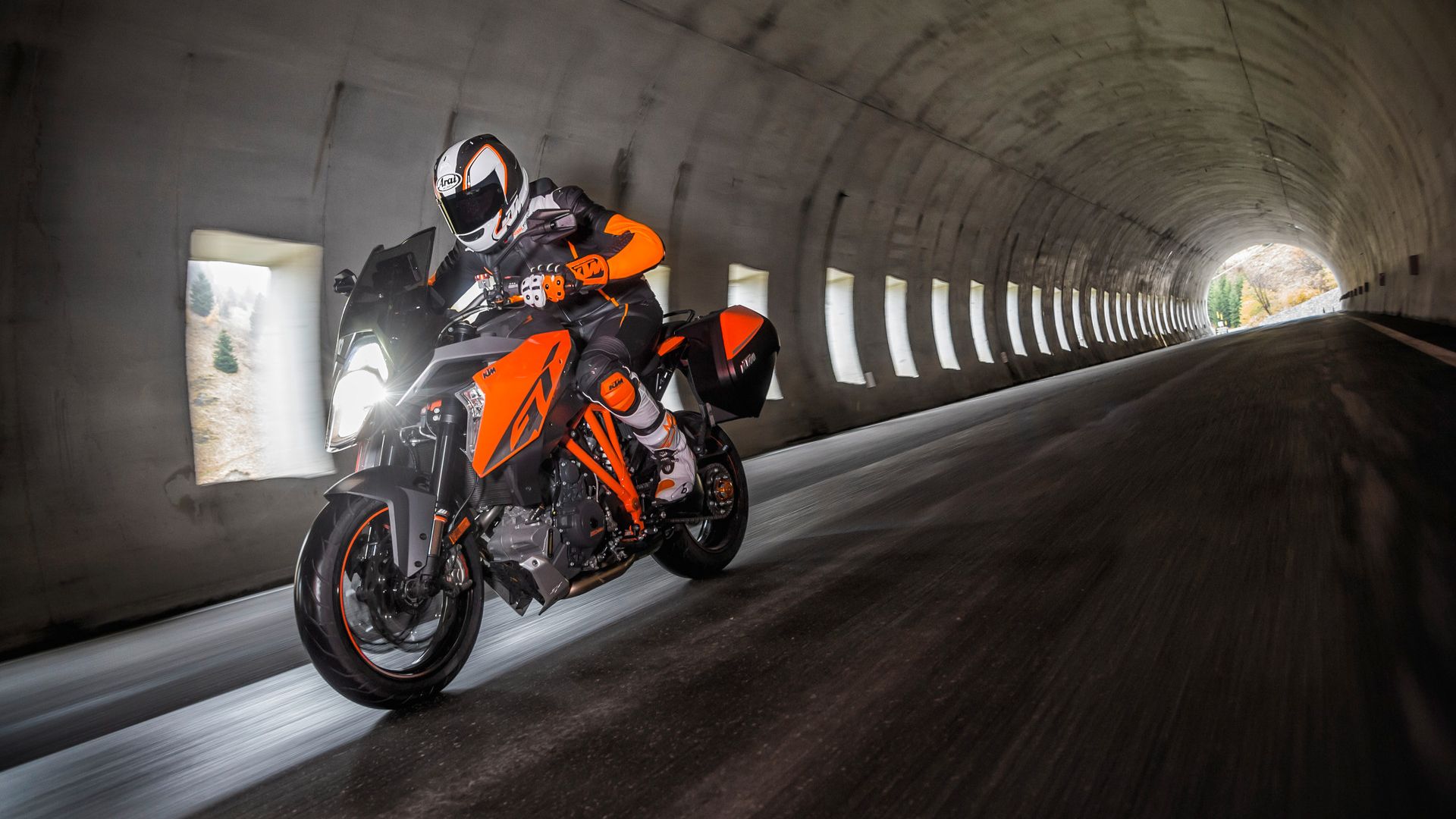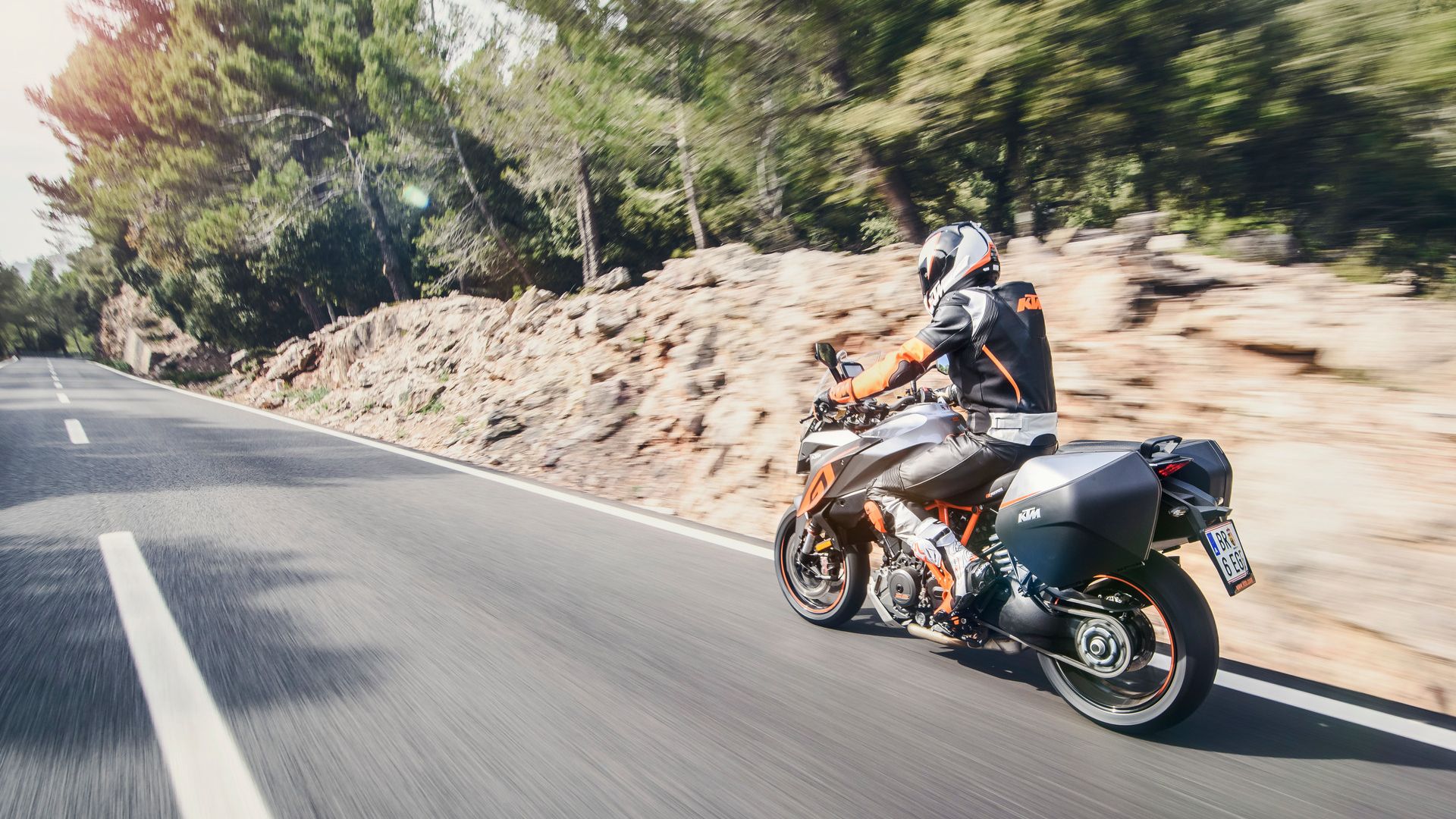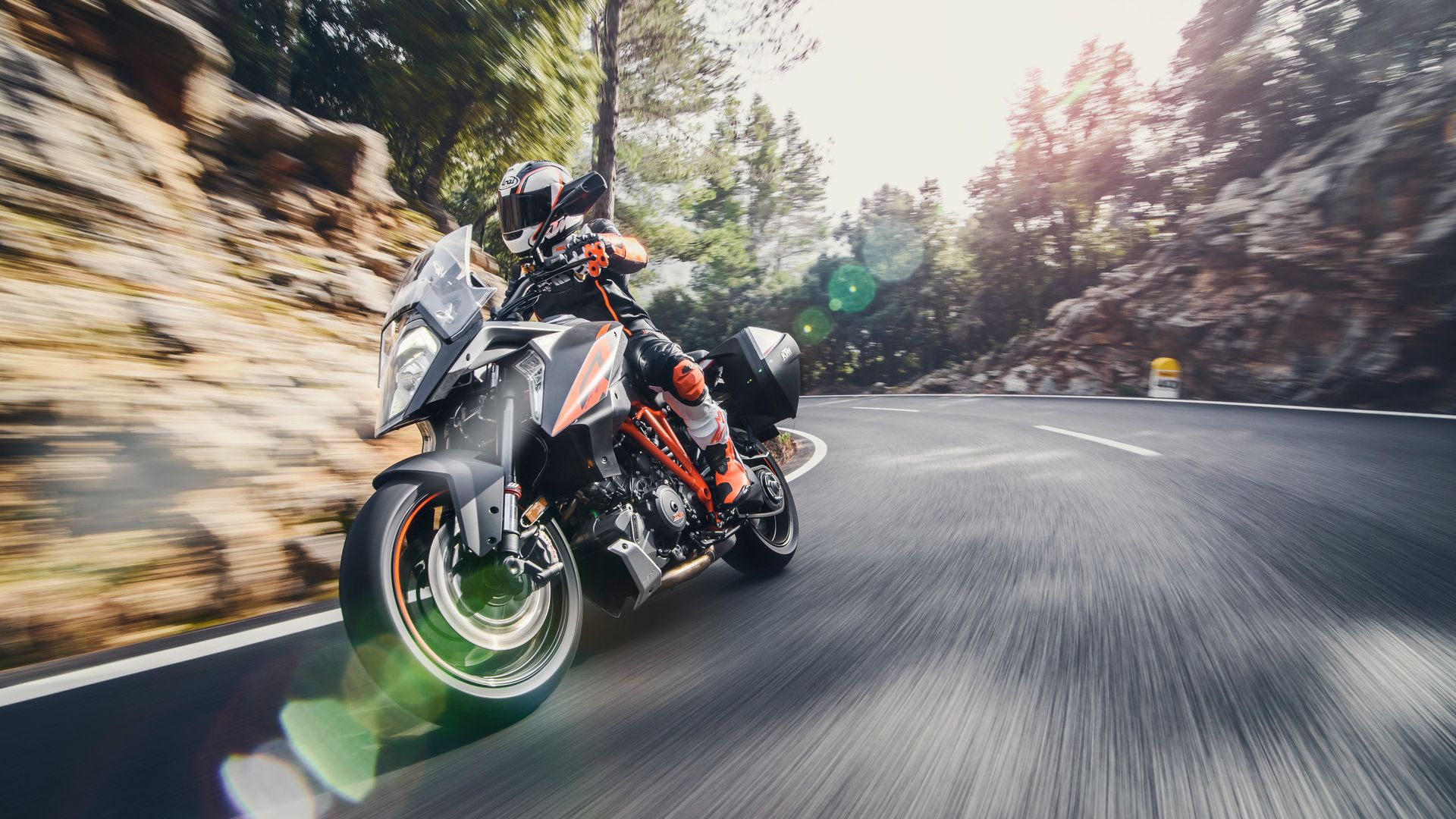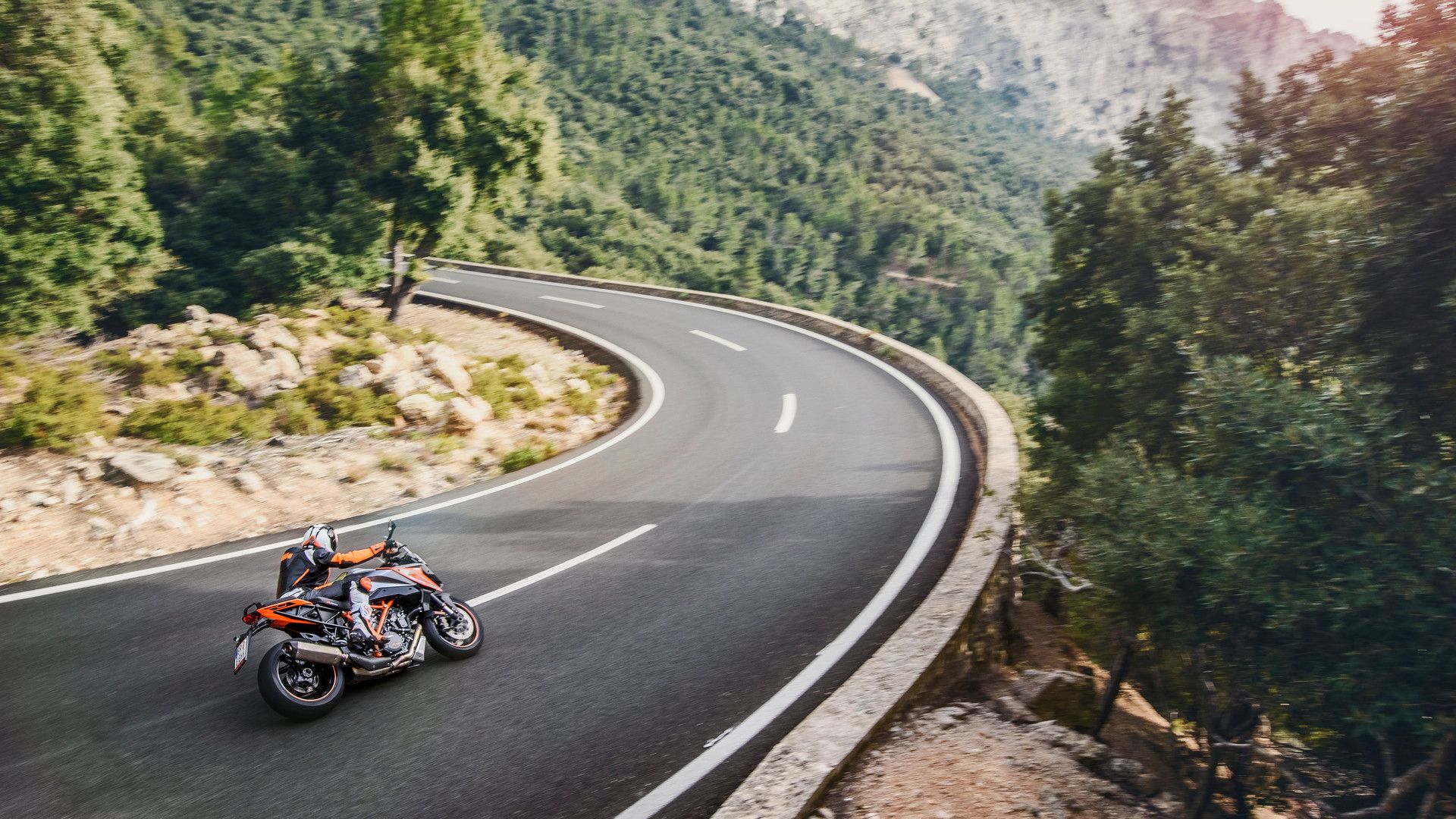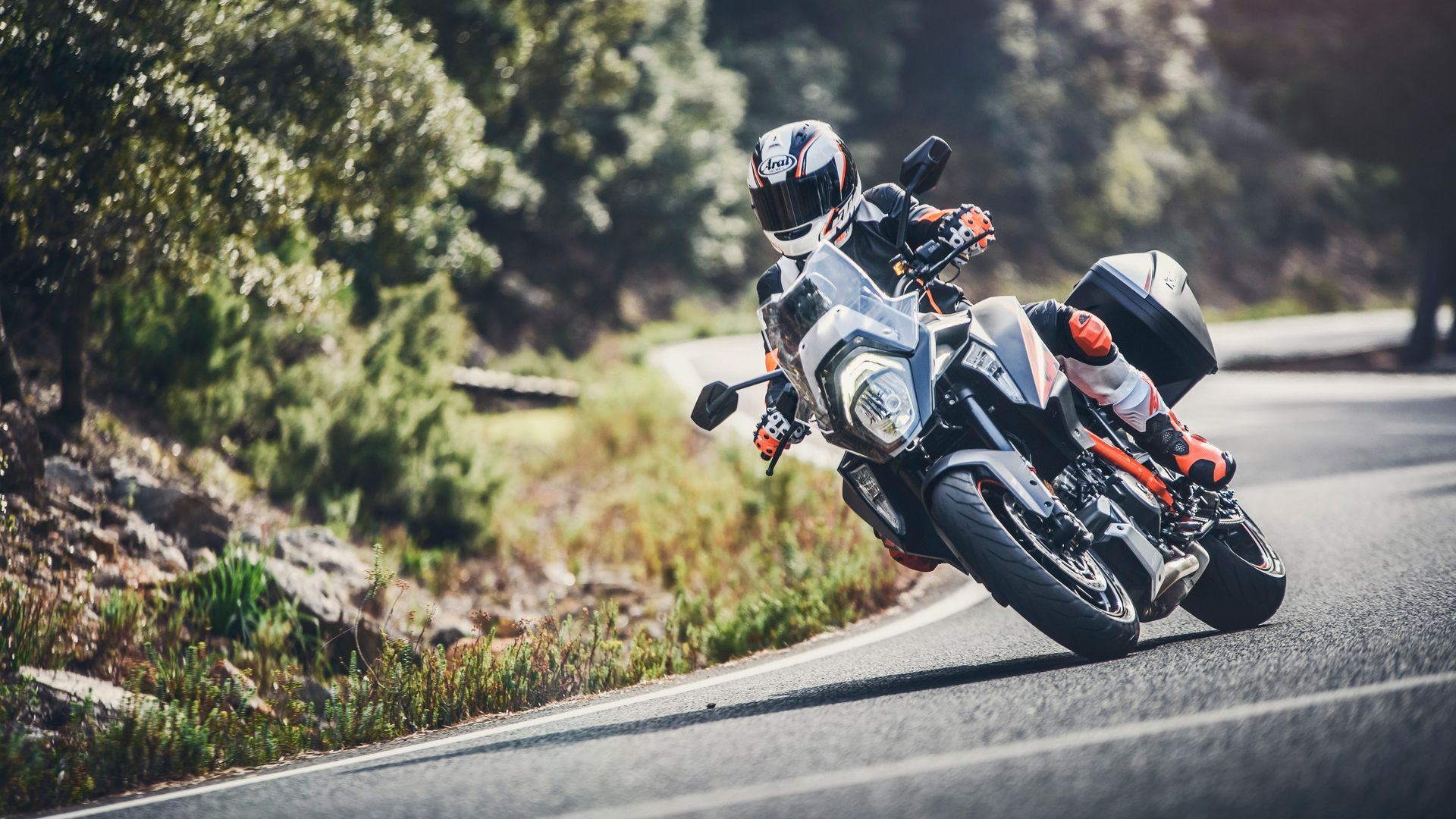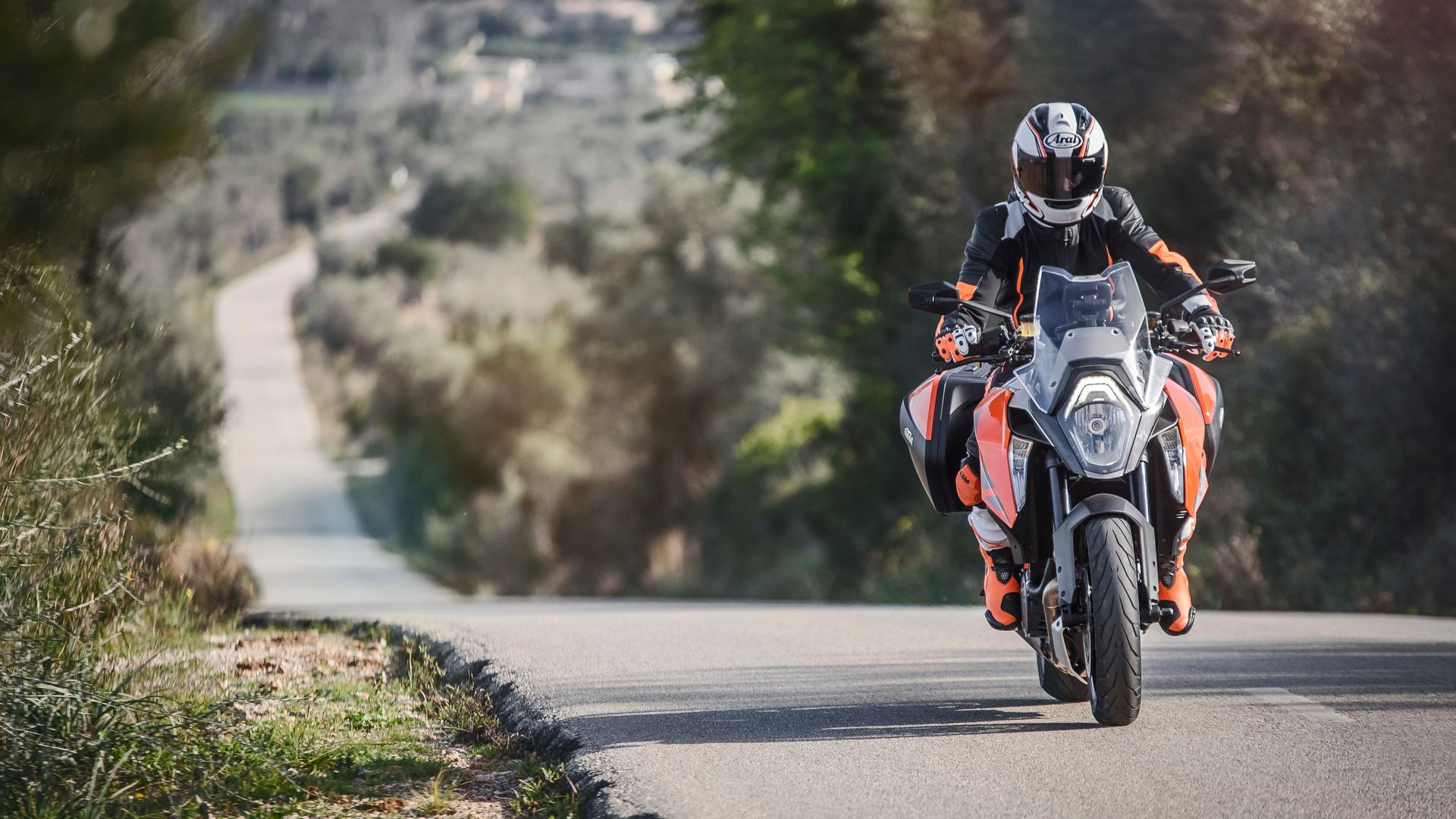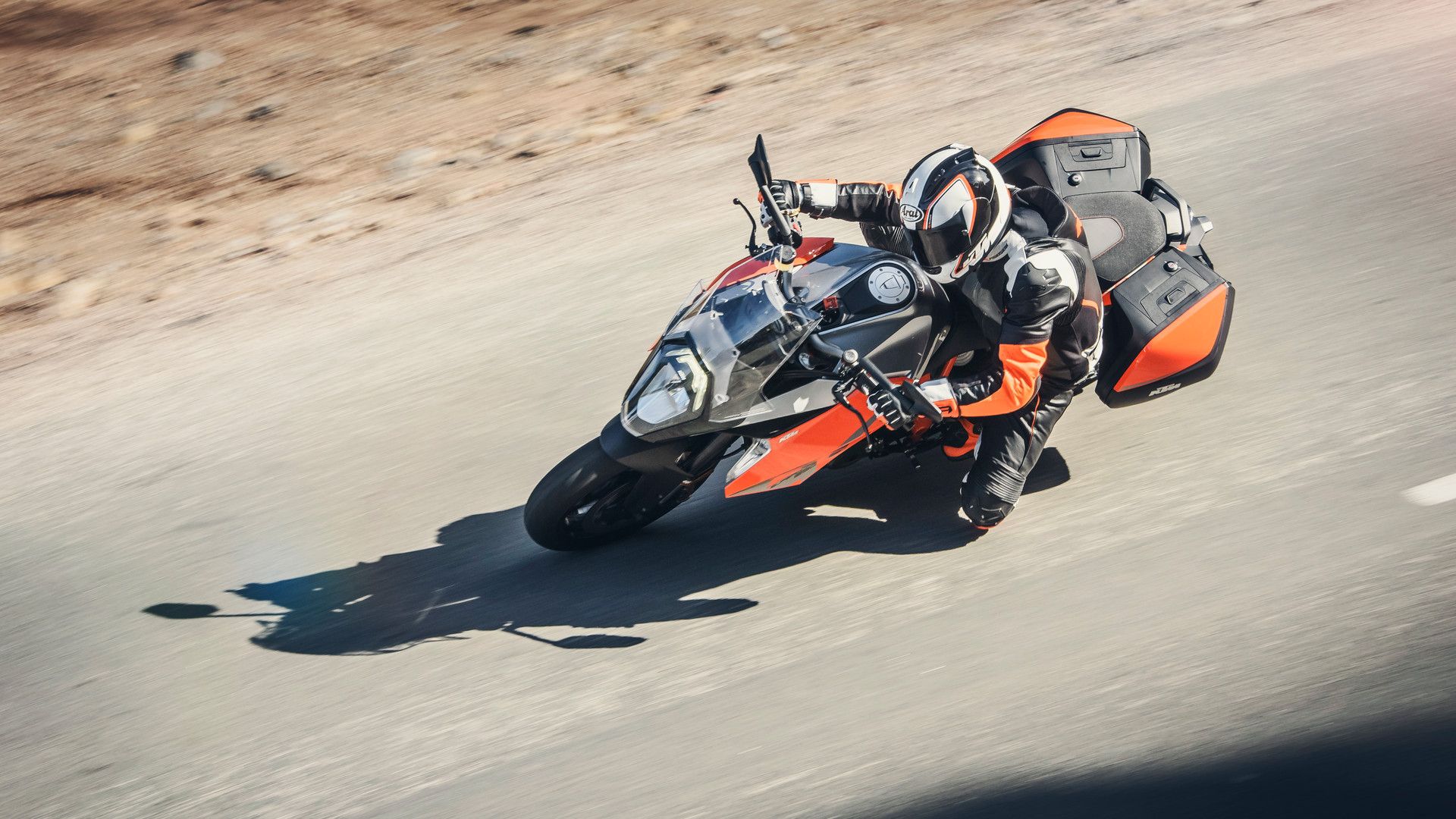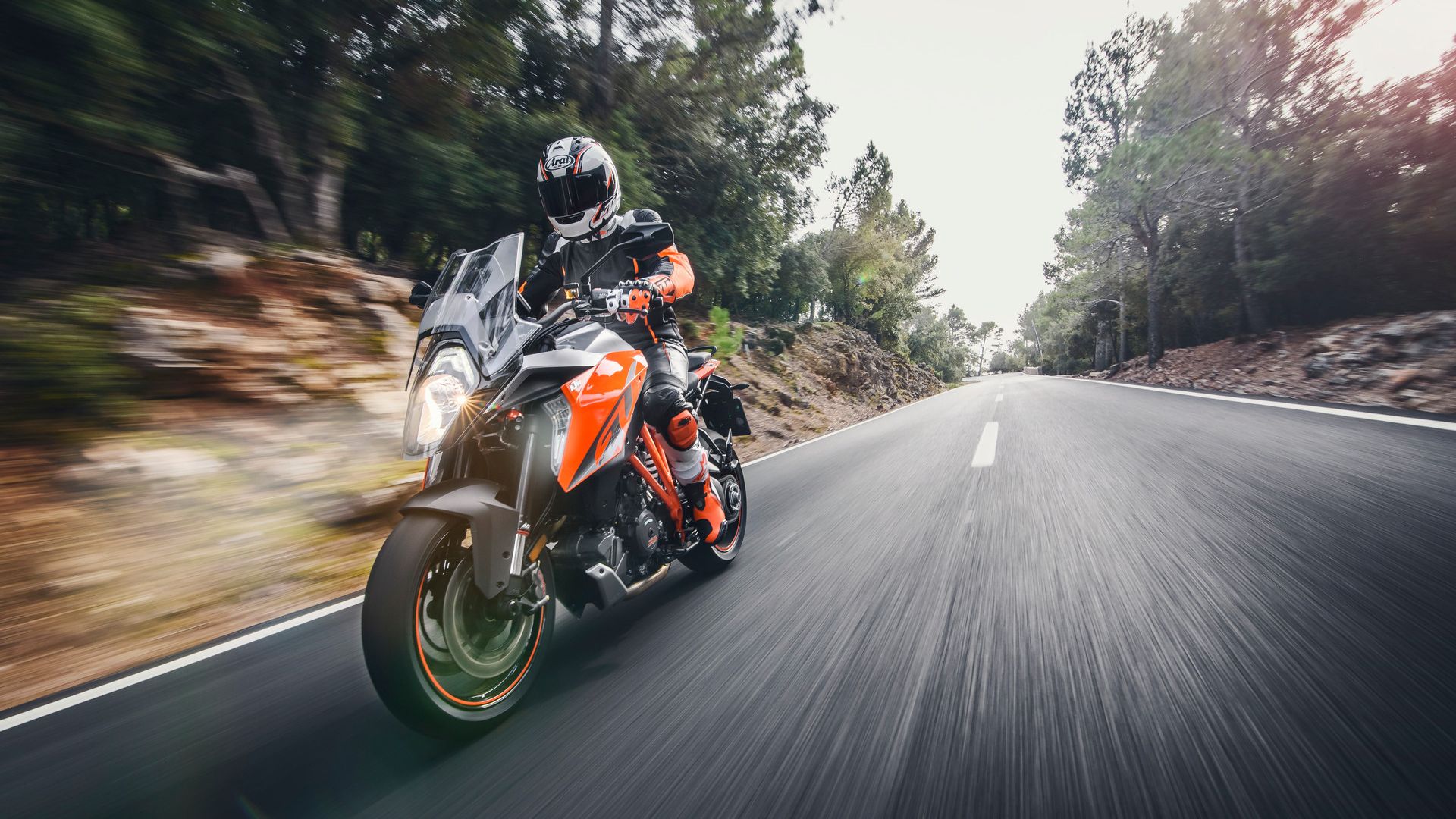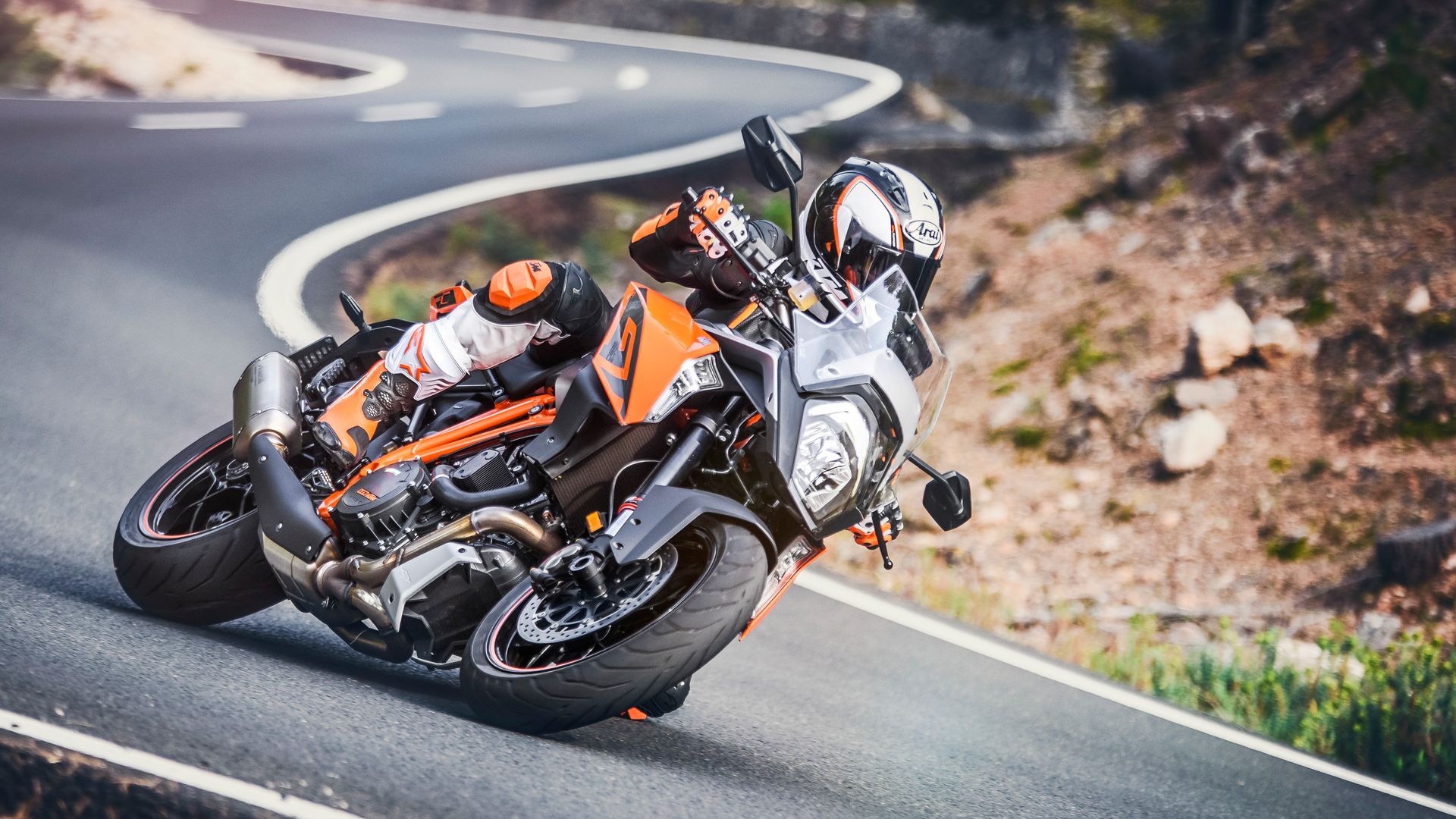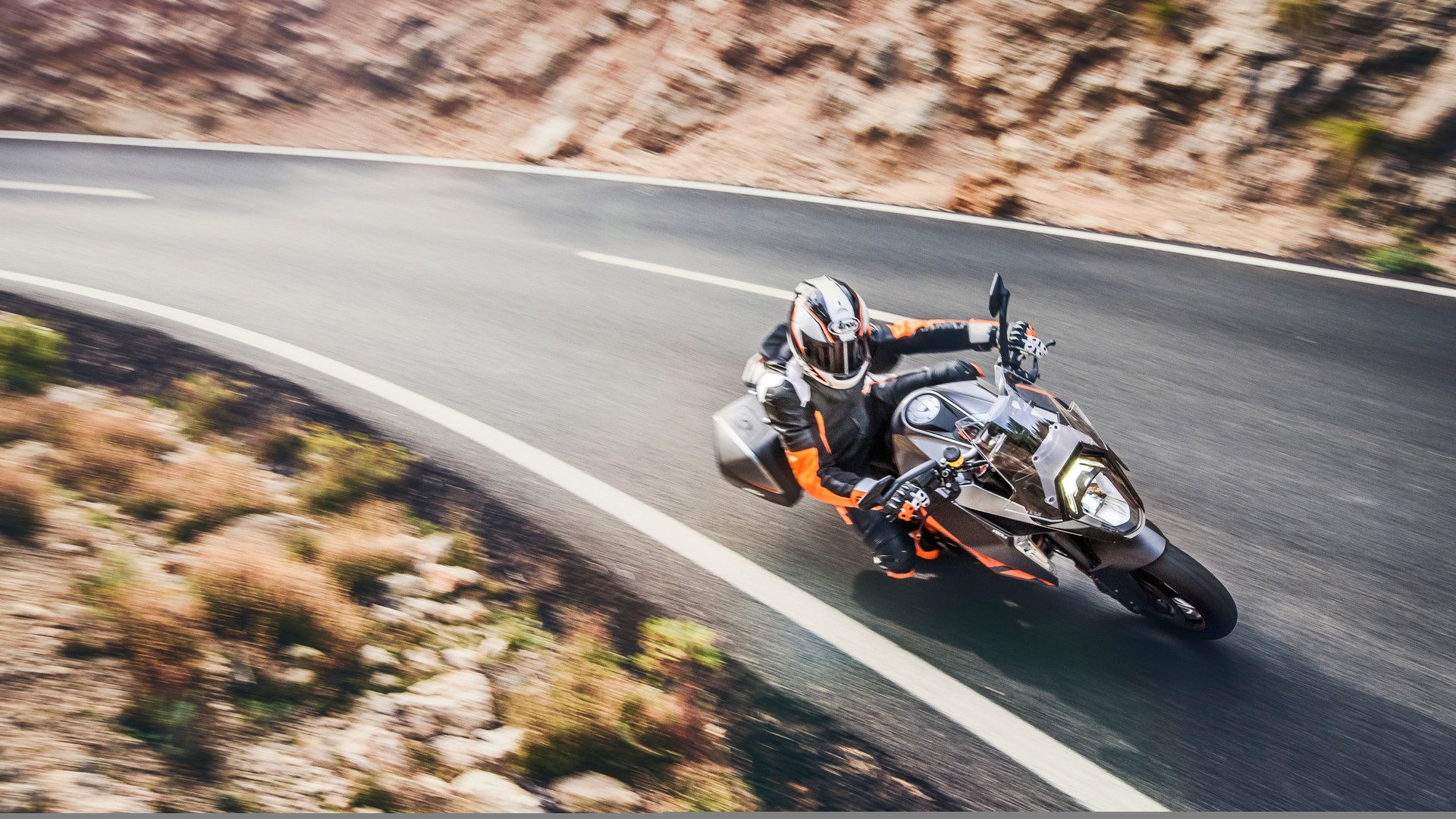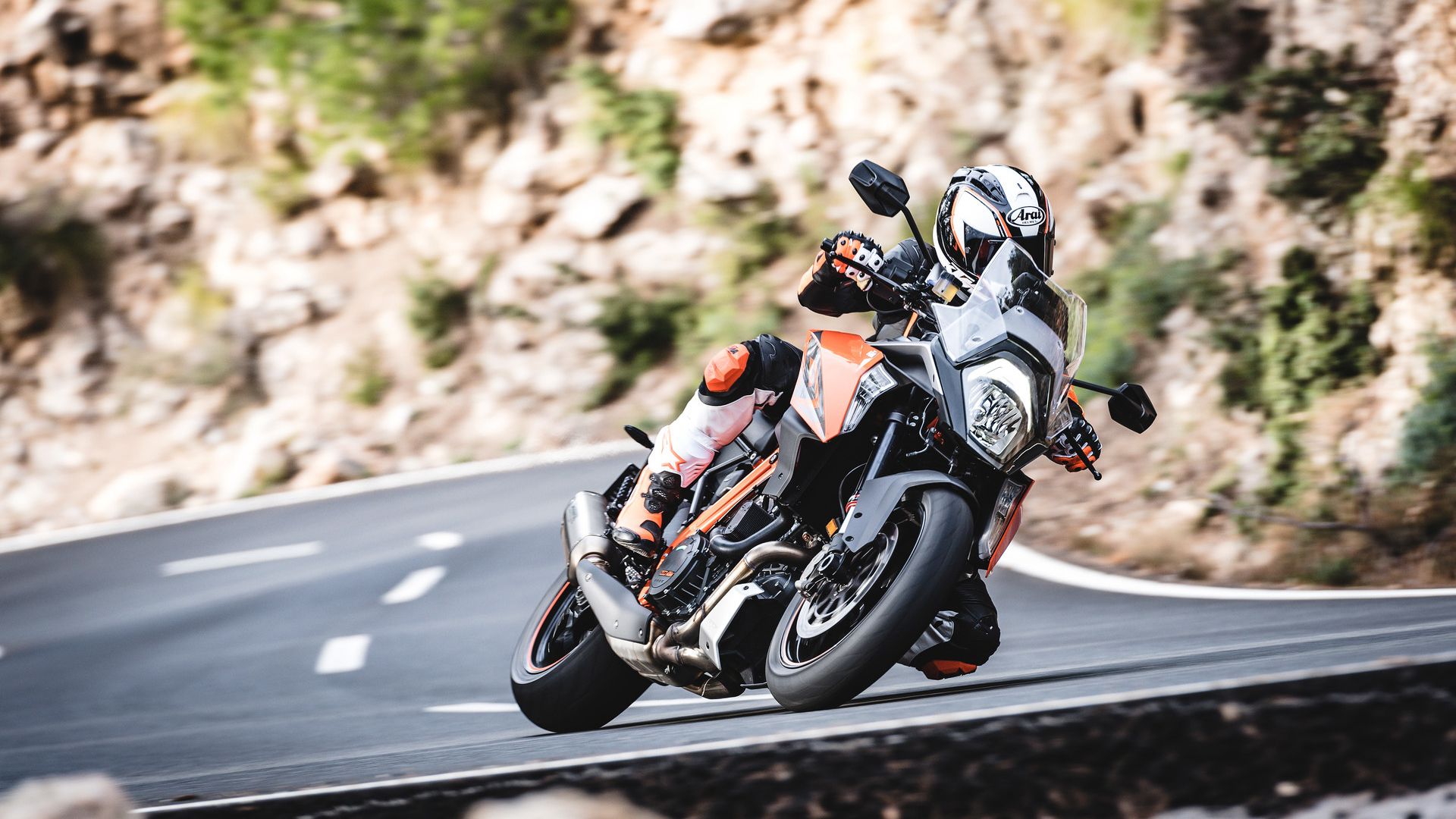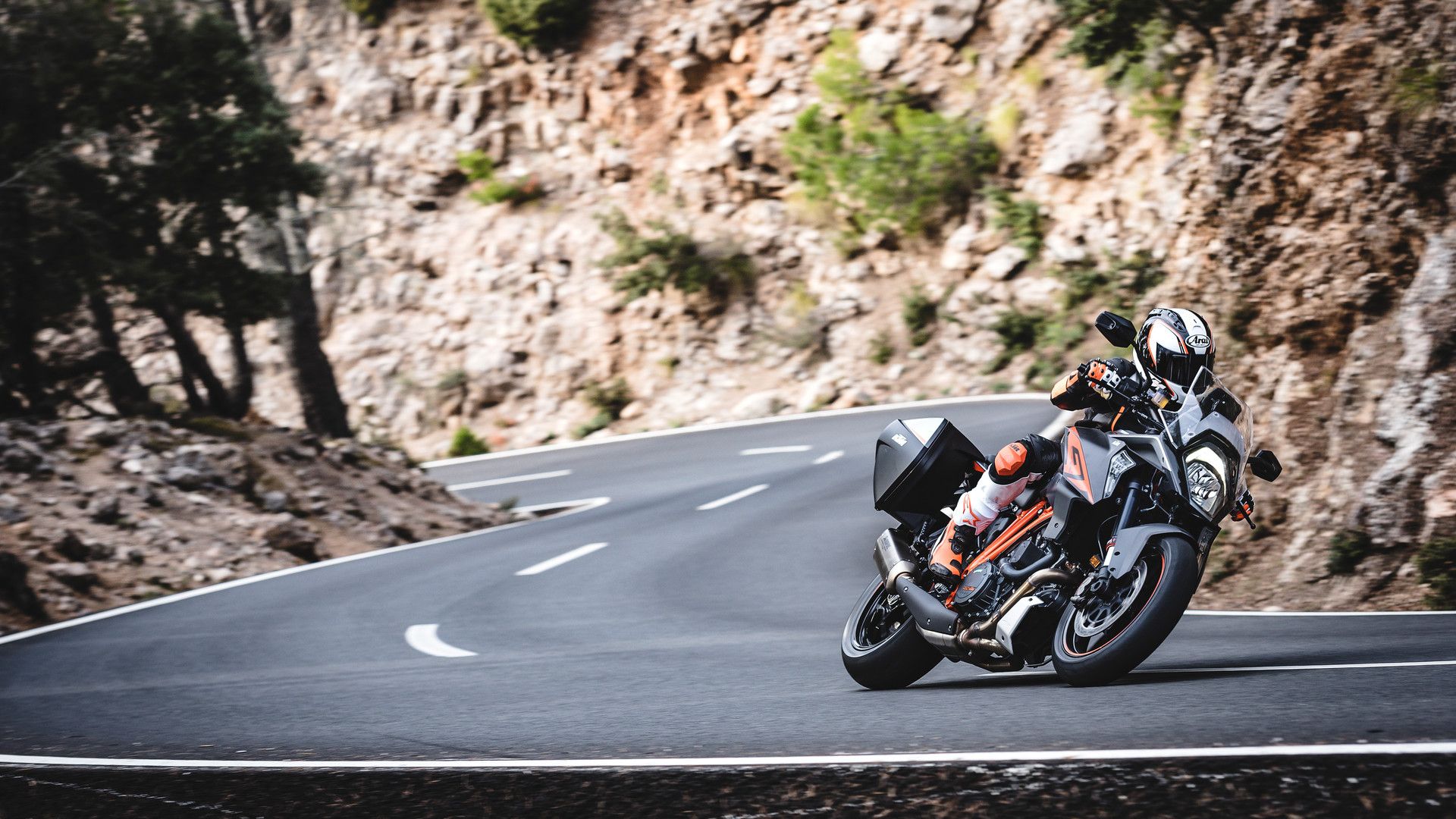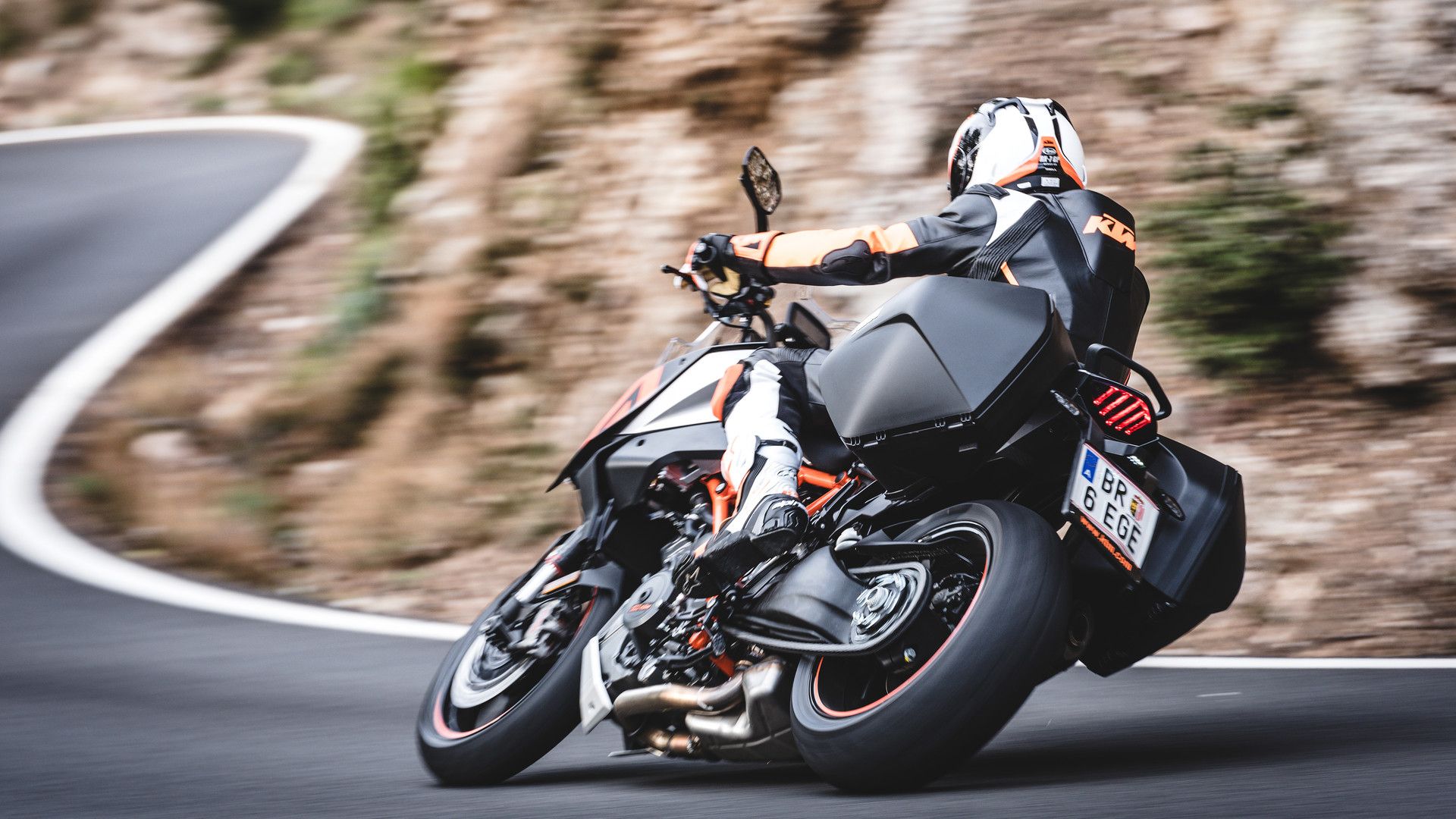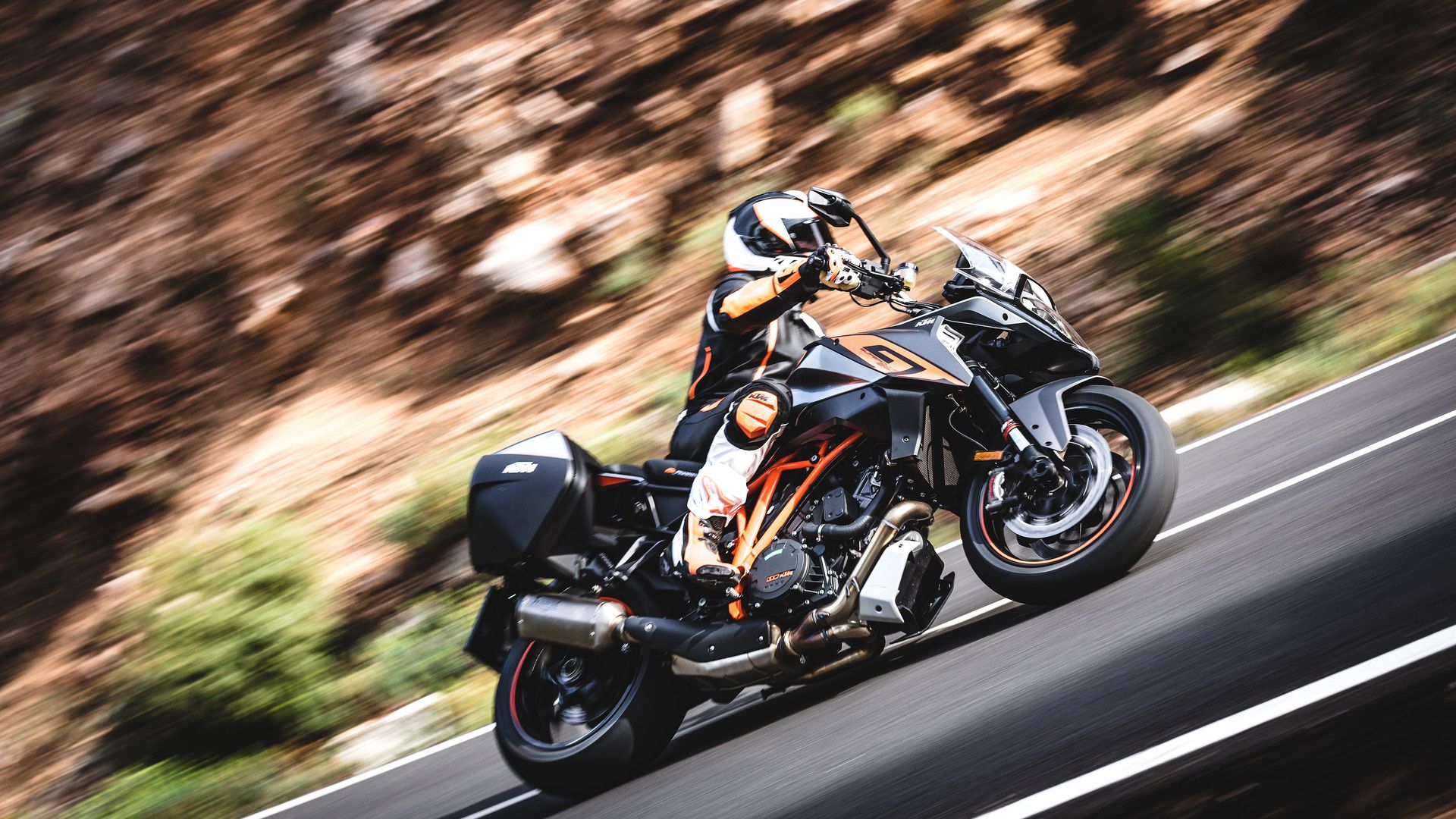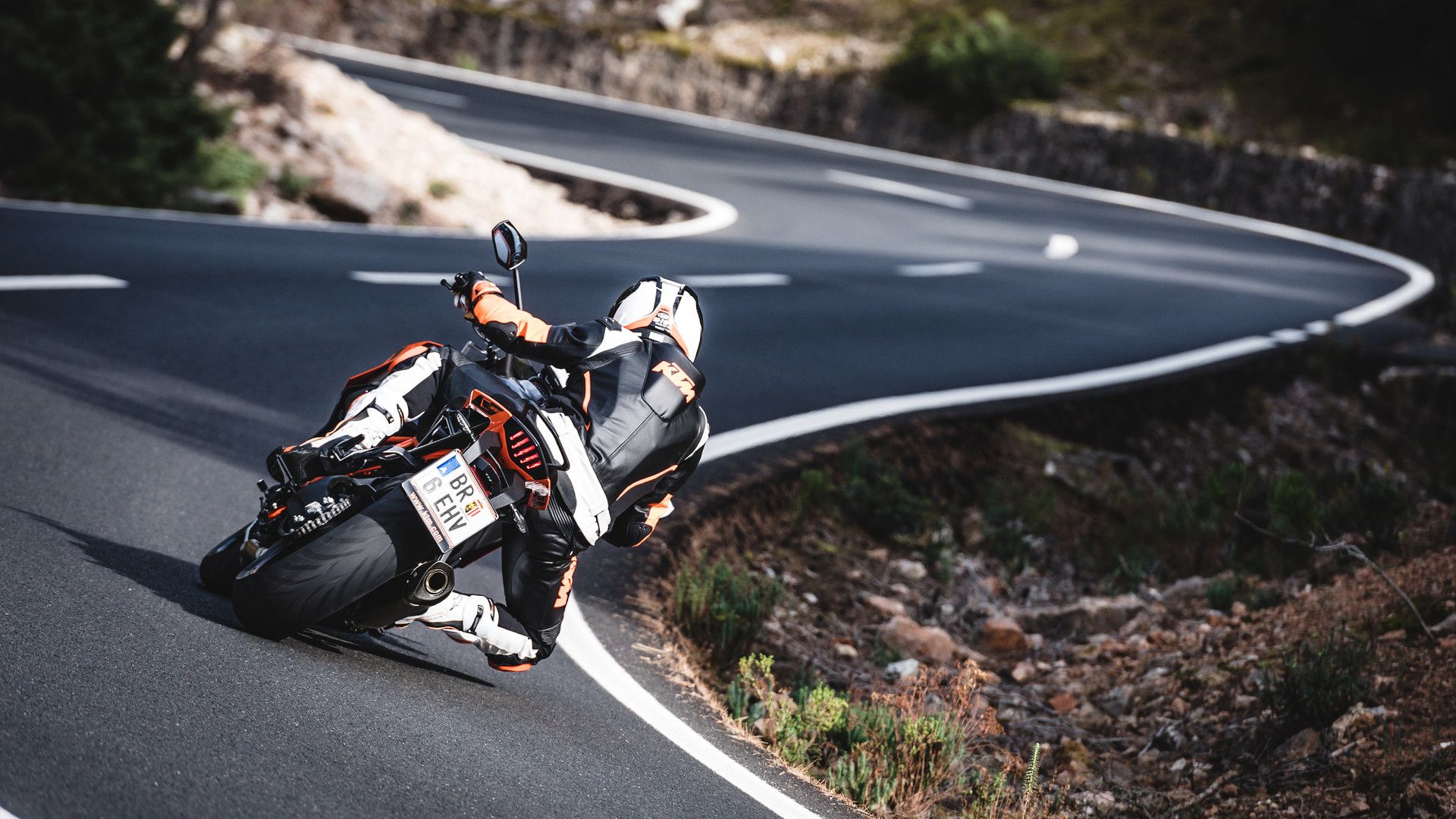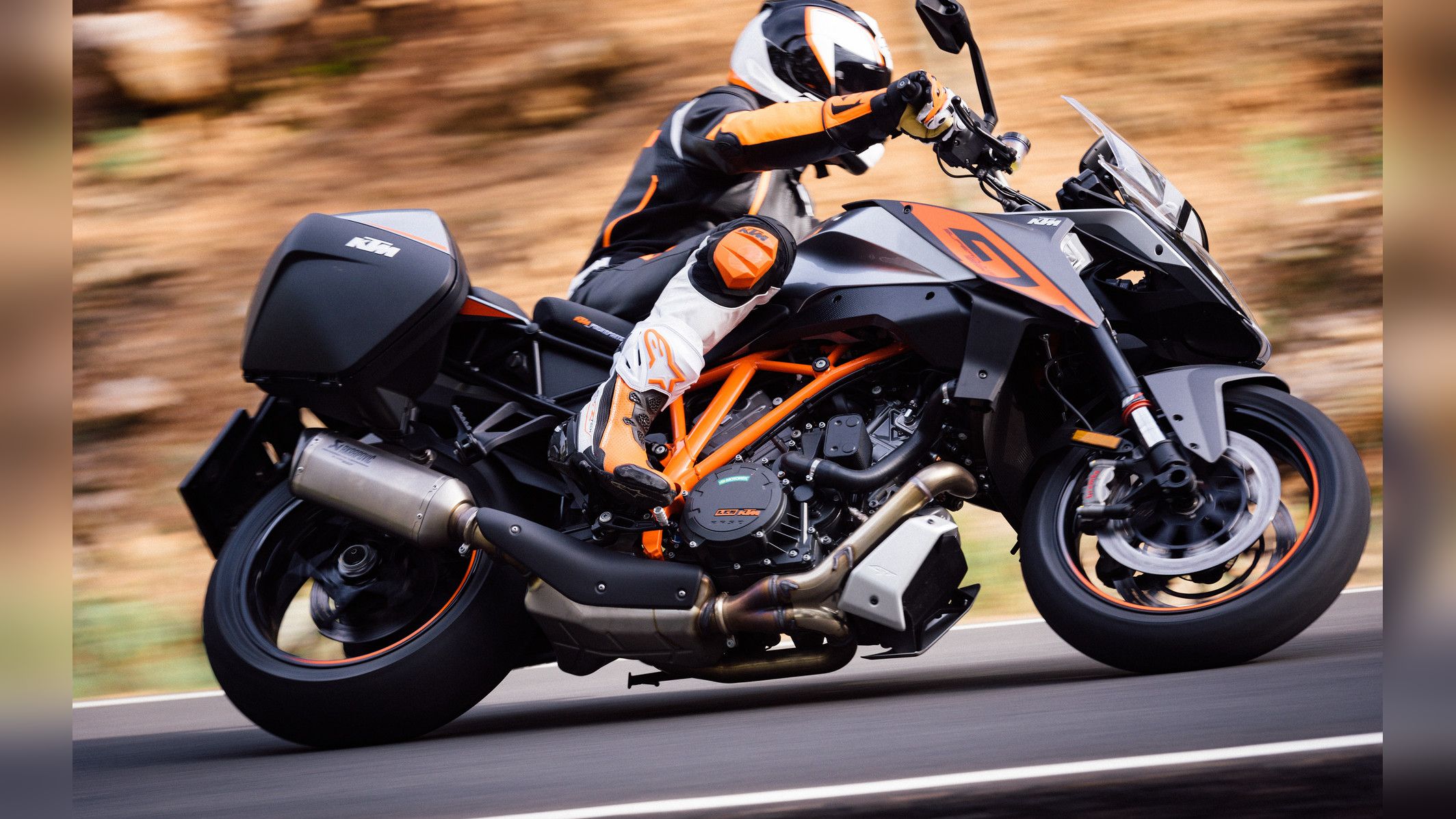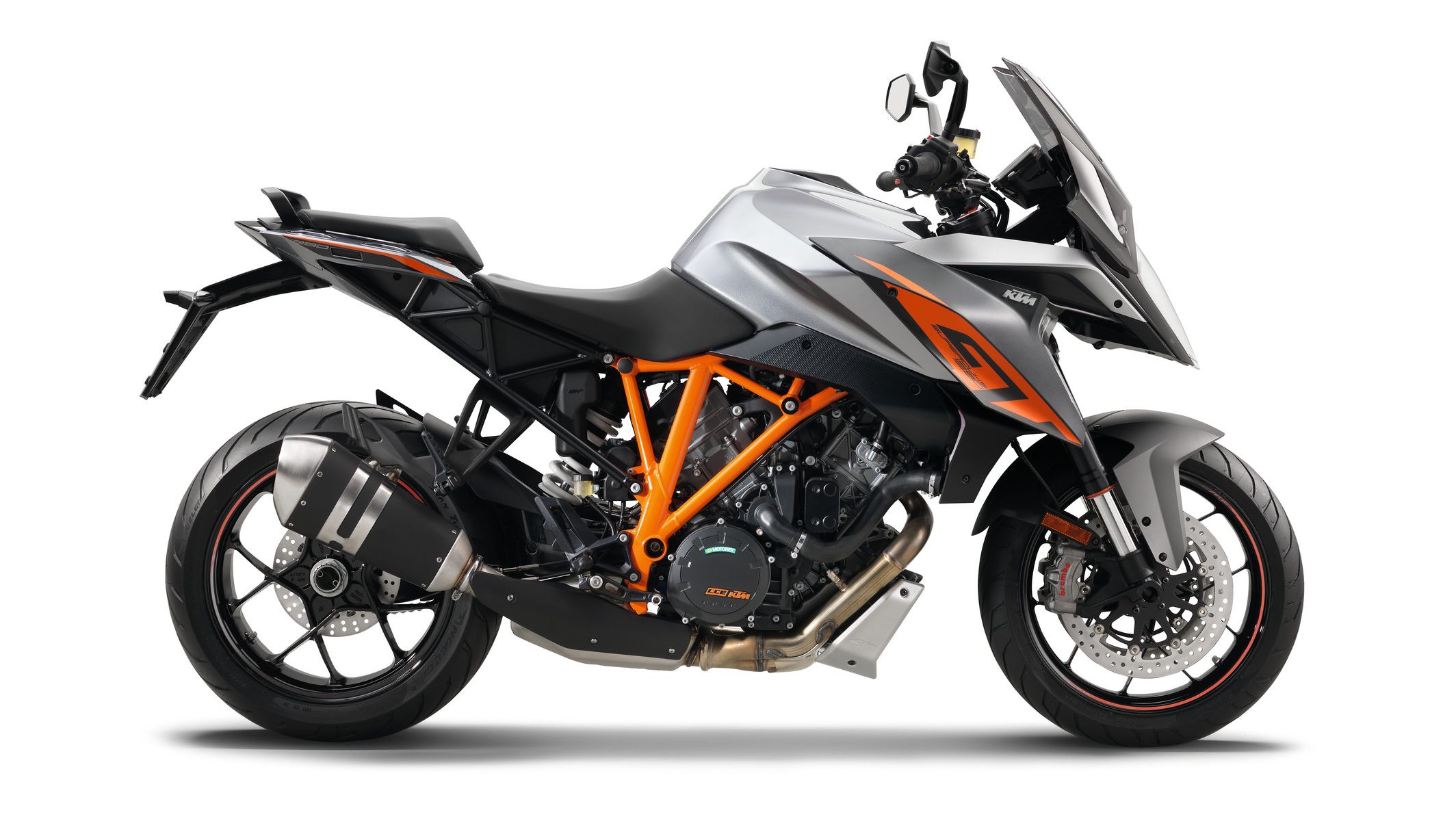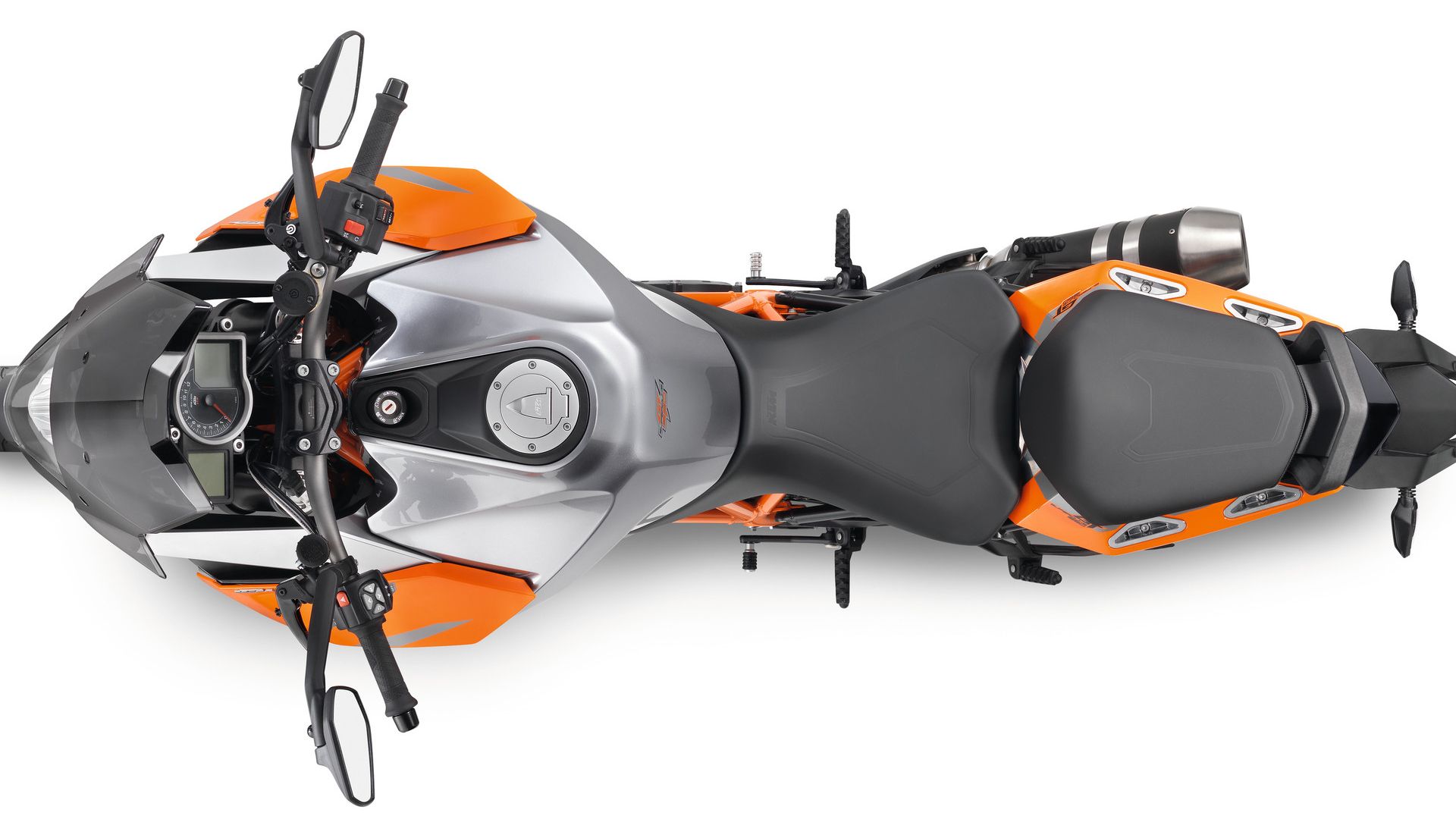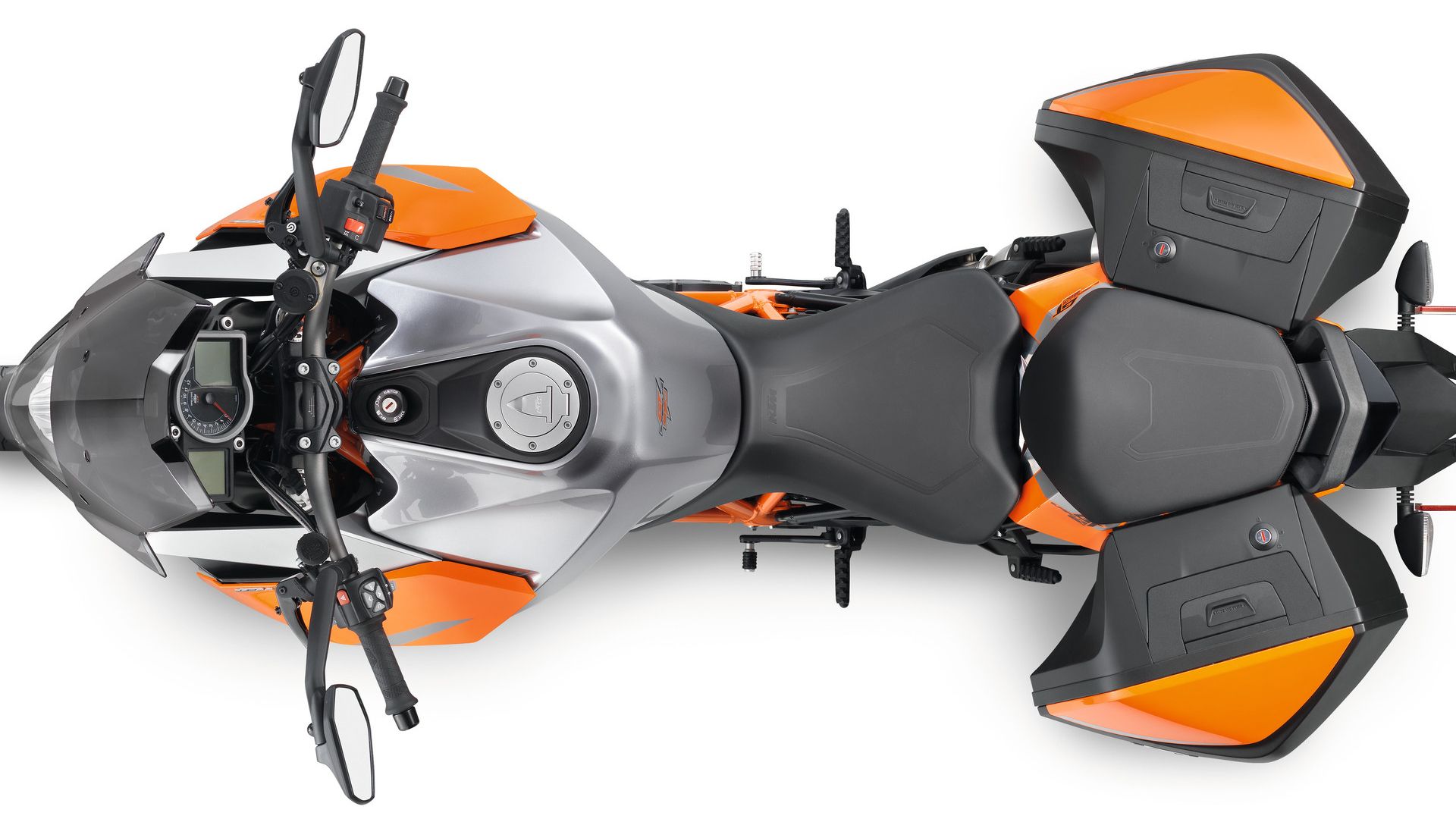When you add a Gran Turismo suffix to the name of a bike, it had better be more than just a streetbike with a set of bags, and it seems that KTM agrees. The new-in-2016 Super Duke GT sports the same 1,290 cc, 173-horsepower plant and much the same chassis as the rest of the family, but the factory boosted the tourability with a set of hard-side panniers and cruise control to go along with a host of comfort- and safety-related features, to include ABS, traction control and more. Best of all, the engineers managed to retain much of the sporty attitude and ability associated with the range to produce a true sport-tourer, so without further ado, let's check out the details.
Continue reading for my review of the KTM 1290 Super Duke GT.
2016 - 2017 KTM 1290 Super Duke GT
- Make: Array
- Model: 2016 - 2017 KTM 1290 Super Duke GT
- Engine/Motor: inline-2
- [do not use] Vehicle Model: Array
Design
The GT starts with a Super Duke R as the base model, and while the overall looks of the GT have that familiar KTM-ness in full effect, the addition of the front fairing and redesigned upper cowling is a clear departure from the naked “R” design. A hand-adjustable windshield -- literally, you push it up and down with your hand -- rides above the angular, front-fairing beak that houses the headlight and sets the tone for the rest of the machine.
That pointy look gets duplicated in the leading edge of the elongated upper cowling/cheek fairings, and again at the trailing edge where the panel peters out alongside the six-gallon fuel tank. Shoulders built into the tank serve to form a knee pocket as well as a place to hang on to (or off of?) while utilizing some body English. Compared to some of the other KTM products, the rider's saddle is relatively comfortable even though the 32.8-inch seat height will be into tiptoe country for shorter riders.
As for the bags, well, I understand that performance was a front-burner goal for the designers, but the panniers are nearly vestigial for all the practical storage they provide. Seriously, they may carry a few T-shirts and that new Starbucks mug you've had your eye on, but I doubt you could get anything of any value aboard once you stash your foul-weather gear in there. I would point out that 1) there are factory accessories that can expand your cargo capacity, and 2) at least it has bags. Most of what passes as “touring models” in the Euro and Asian markets come without any sort of storage at all, so as feeble as the bags are, they are still an improvement over none at all. Plus they come with quick-detach hardware so you can quickly strike them for a cleaner, supersportish look. Too bad there is nothing quick or easy to be done about the rear mudguard/tallight/tunrsignal/plateholder combo that hangs off the rear end like an afterthought.
Chassis
There is little mystery where the frame is concerned; the classic KTM Trellis frame comes completely exposed like some sort of alien exoskeleton for a look that is paridoxically naked and dressed up all at the same time. The chrome-molybdenum members are laser-cut for precise fitment ahead of welding, and the whole skeleton comes powder coated for aesthetics as well as weather protection since, you know, it's hanging out there for all to see. A single-side swingarm finishes out the standing chassis, and let's face it, that always adds to the curb value.
At its core, the GT is still a sportbike, and the 24.9-degree steering-head angle gives it the handling one expects of a KTM with a WP steering damper to tame the kickback when (not if) you accidentally pick up the front end. If the thought of barely hanging onto a fiery-eyed Austrian beast (not to be confused with The Beast), just relax, because KTM made this bike as idiot-proof and well-behaved as possible. Check it out; the augmentations start with the suspension components with inverted, 48 mm WP front forks and WP rear monoshock that sport a dynamic, semi-active ride. Sensors feed the Suspension Control Unit with information about the surface conditions, then the SCU adjusts the damping forces based on which of the three suspension modes the rider has selected.
ABS oversight protects the contact patch integrity from overbraking incidents, and it comes with a supermoto mode that disables the rear ABS so you can slide that rear end around if you like,or leave it engaged and let the cornering ABS feature keep you glued to the pavement. Not only does it perform the usual ABS job, but it also combines the brakes so a portion of the front-brake pressure goes to the rear for balanced braking. KTM rounds out the fandanglery with a Hill Hold Control that engages the front brake for smooth uphill takeoffs.
A pair of four-pot Brembo M50 Monobloc anchors grab the dual, 320 mm front discs with a twin-piston binder and 240 mm disc out back. The factory adds some comfort with an adjustable front brake lever with five positions to accommodate a range of hand sizes from dainty claws to full-size hamburger shovels. Alloy rims help keep unsprung weight down, and they come lined with Pirelli's sticky Angel GT hoops.
Drivetrain
The GT shares the same base engine as the Super Duke R, and so is something of a technological marvel even before we get to all the electronic wizardry. A liquid-cooled, 75-degree V-twin runs with a 108 mm bore and 71 mm stroke for a total displacement of 1,301 cc. The factory milled away at the crankshaft and chopped the skirts off the pistons to reduce reciprocating weight as much as possible for quick throttle responses. Quad-valve heads open up the combustion chamber to let the mill breathe with a dual-plug ignition system that generates twin flame fronts for complete and efficient combustion. How does it all add up? Well, quite nicely I'd say; the GT plant puts out 106 pound-feet of torque, and when spooled up all the way it brings a total of 173 horsepower to the table.
That's a lot of power to try and control, no matter what type of bike you have, but the factory provides some gadgetry to help you keep it under control. It all starts with the ride-by-wire throttle control that enables the switchable traction control, anti-accidental wheelie function and the Motor Slip Regulation that actually increases engine RPM with the throttle when excessive backtorque threatens the integrity of the rear contact patch. Yeah, that's on top of the slipper clutch that naturally soaks up a large portion of the energy from aggressive downshifts, so you can count on that rear tire staying planted, even if you're misbehaving just a bit. All of this gives the GT a friendly, predictable nature that belies the awesome power and speed it commands.
A six-speed transmission comes geared for highway travel with an appoximate 90 mph cruise speed in top gear and a quickshift feature that allows for throttle- and clutch-less shifts when you want to let it all hang out.
Pricing
U.S. buyers can expect a $19,999 MSRP on this ride.
Competitors
For my competitor I hopped the border into Germany for BMW's R 1200 RT. Not only are the two companies close geographically, but they also share a significant amount of culture, so I wanted to take a look and see how close their machines are. Turns out; maybe not so close after all.
Beemer takes a much-less-naked tack with fairly full body panels to match the large front fairing and more-spacious hard bags. A power-adjustable vented windshield completes the rider protection on the Beemer for a larger pocket of protection than the KTM. That comes at a price, however, since it has to push a lot more air, and in the end the KTM entry is more efficient.
Aesthetics aside, the base-model R 1200 RT runs a simpler suspension system that does come with manual adjustments, but the Dynamic Electronic Suspension Adjustment system that more closely resembles the GT's suspension is optional equipment that comes bundled with the Ride Modes Pro package. Like the KTM, the BMW comes with corner-sensitive ABS and traction control, but the clutchless gear-shift feature is another option that will pad the sticker in order to compete directly with the GT.
Engine size falls off a bit on the Beemer with only 1,170 cc in the twin-jug boxer. Naturally, this creates a performance differential that leaves BMW in the dust with only 125 horsepower and 92 pounds o' grunt. Did I say only? To be fair, that's plenty for civilized areas, but still short of the brute force KTM brings to the table. At $18,145 the base-model R 1200 RT looks at a glance to be a skosh cheaper than the $19,999 Duke, but by the time you add the optional features to match the fandanglery of the base KTM that lower sticker is going to balloon well past the 20-K mark.
He Said
“If you like your sport-tour machines heavy on the “sport” then this is the machine for you. Not only is it powerful and capable, but the extra control features really make it safe and friendly even for folks whose skill level falls below the 1-liter measure. I'm not saying it's idiot proof, but it is definitely idiot-resistant, and that counts for a lot.”
She Said
My wife and fellow motorcycle writer, Allyn Hinton, says, "This truly is a sport-tourer. The power and responsiveness are there for the sport side of the thing, and the comfort and ride is there for the tourer side. Grab a fistful and twist and you'll pick the front wheel up, no problem yet it just shrugs off uneven pavement with aplomb. A lot of tourers are great on pristine pavement, but get scary when the going gets rough. The 1290 Super Duke GT doesn't care. Bumpy country roads are no problem. My only downer is the seat height. At almost 33 inches, it's a fairly tall ride so anyone shorter than about 5' 9" is going to be tippy-toeing at best or bouncing foot-to-foot at worst. Here's a tip for you, though. If you plan to carry a passenger on a regular basis, check out the accessories catalog and get a top chase or hit the aftermarket for a sissy bar. The 'sport' side of the bike makes it hard for the pillion-person to hang on if you get even a little twisty. "
Specifications
|
Engine: |
|
|
Design: |
2-cylinder, 4-stroke, V 75° |
|
Displacement: |
1301 cm³ |
|
Bore: |
108 mm |
|
Stroke: |
71 mm |
|
Power in KW: |
127 kW |
|
Starter: |
Electric starter |
|
Lubrication: |
Forced oil lubrication with 3 oil pumps |
|
Transmission: |
6-speed |
|
Primary drive: |
40:79 |
|
Secondary gear ratio: |
17:38 |
|
Cooling: |
Liquid cooled |
|
Clutch: |
PASC (TM) slipper clutch, hydraulically actuated |
|
EMS: |
Keihin EMS with RBW, twin ignition |
|
Chassis: |
|
|
Frame design: |
Chromium-Molybdenum steel trellis frame, powder coated |
|
Front suspension: |
WP Semi-active suspension USD Ø 48 mm |
|
Rear suspension: |
WP Semi-active suspension monoshock |
|
Suspension travel (front): |
4.92 inch |
|
Front brake disc diameter: |
320 mm |
|
Rear brake disc diameter: |
240 mm |
|
ABS: |
Bosch 9ME Combined ABS (incl. cornering ABS and supermoto mode, disengageable) |
|
Chain: |
X-Ring 5/8 x 5/16" |
|
Steering head angle: |
65.1 ° |
|
Seat height: |
32.87 inch |
|
Dry weight: |
451.94 lb. |
|
Tank capacity (approx.): |
6.08 US gal |
|
Colors: |
grey, orange |

